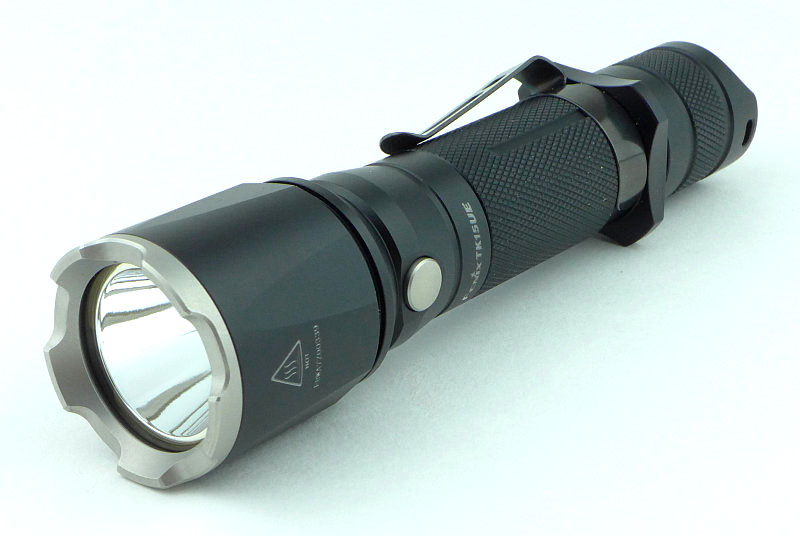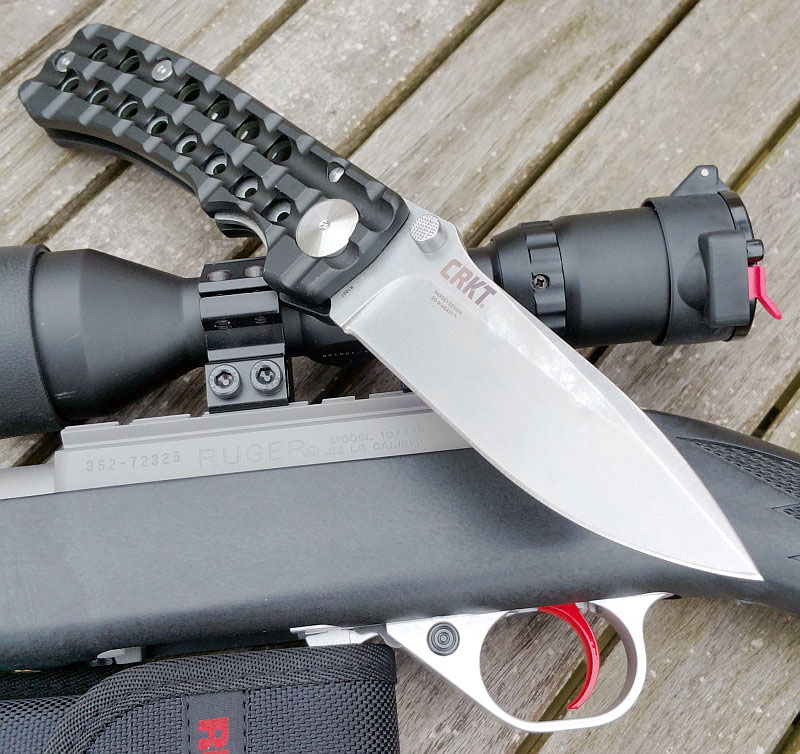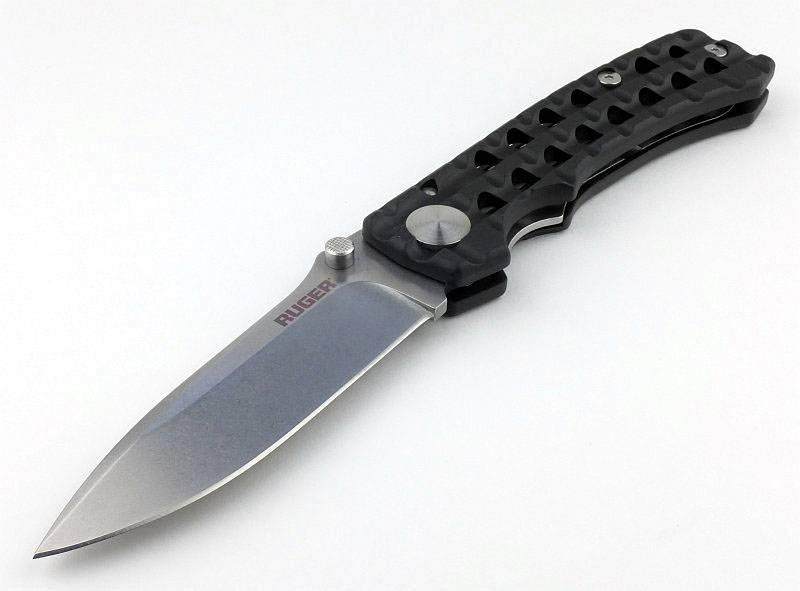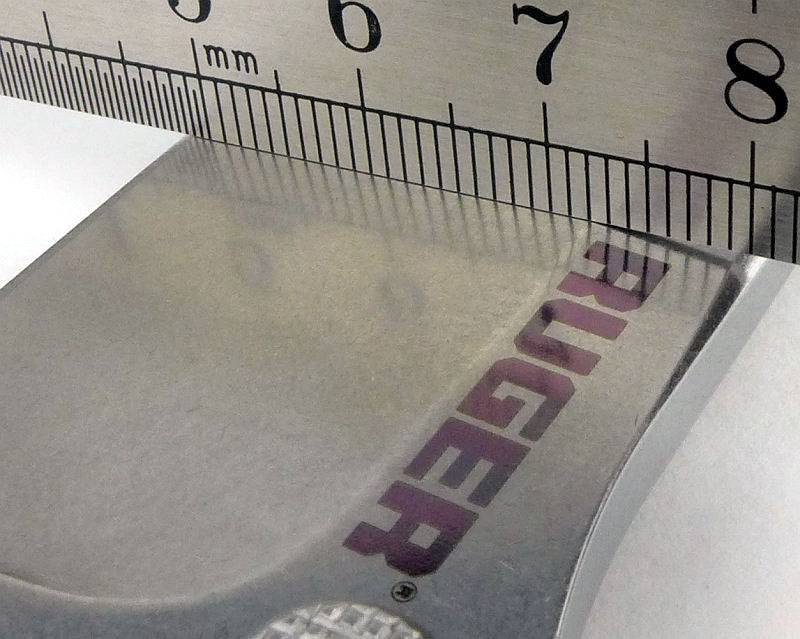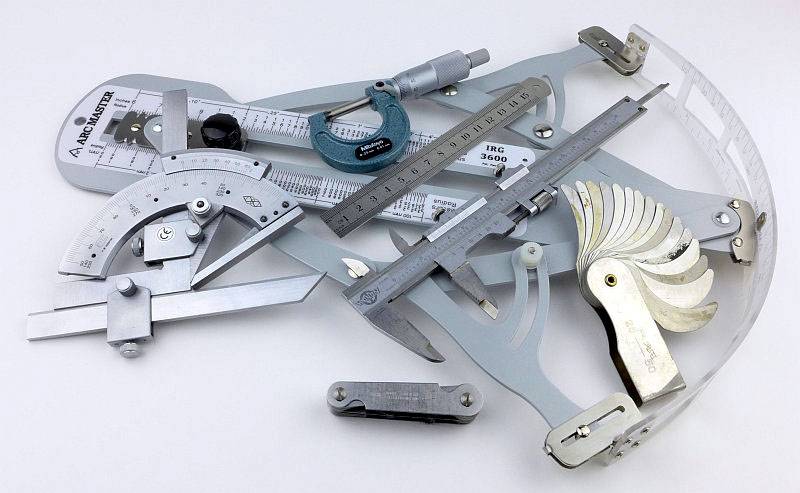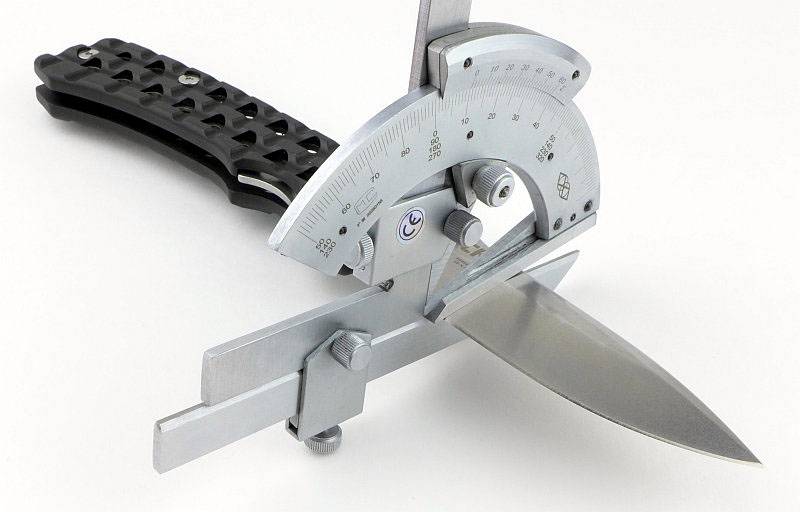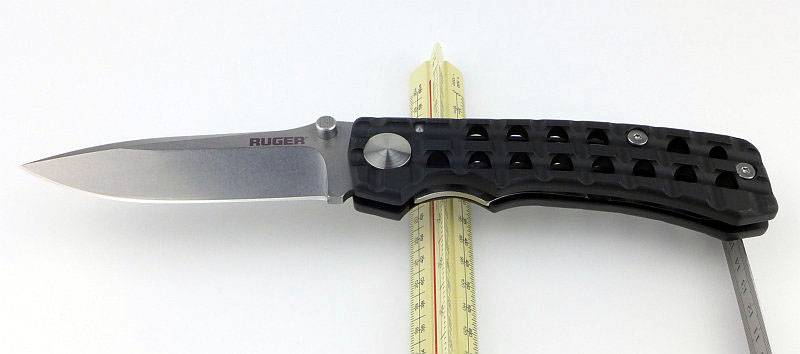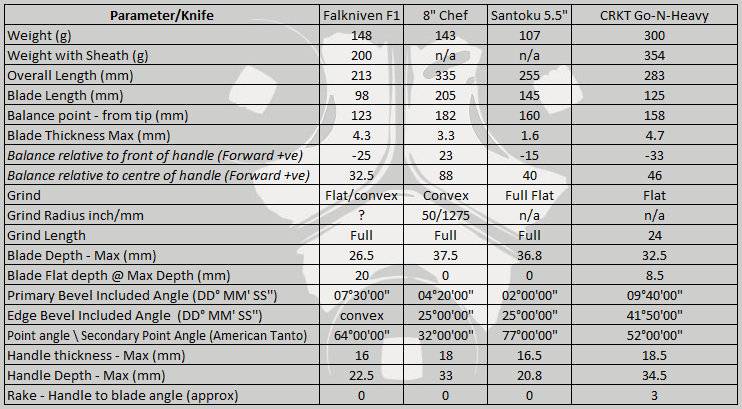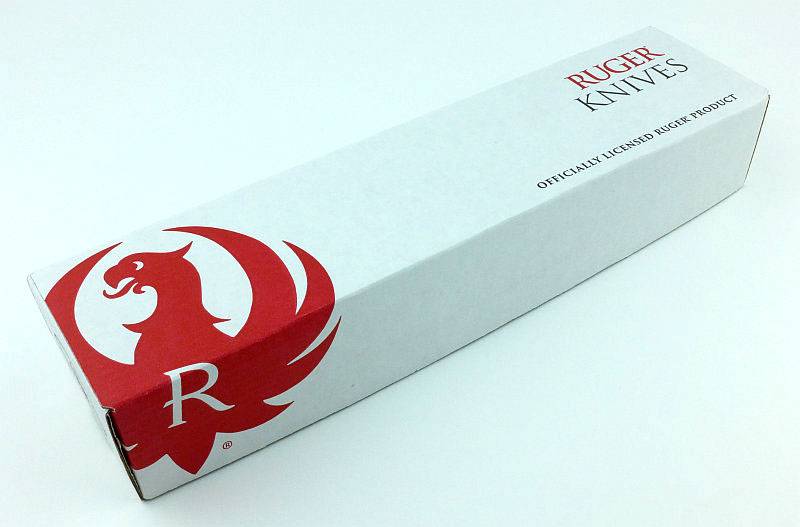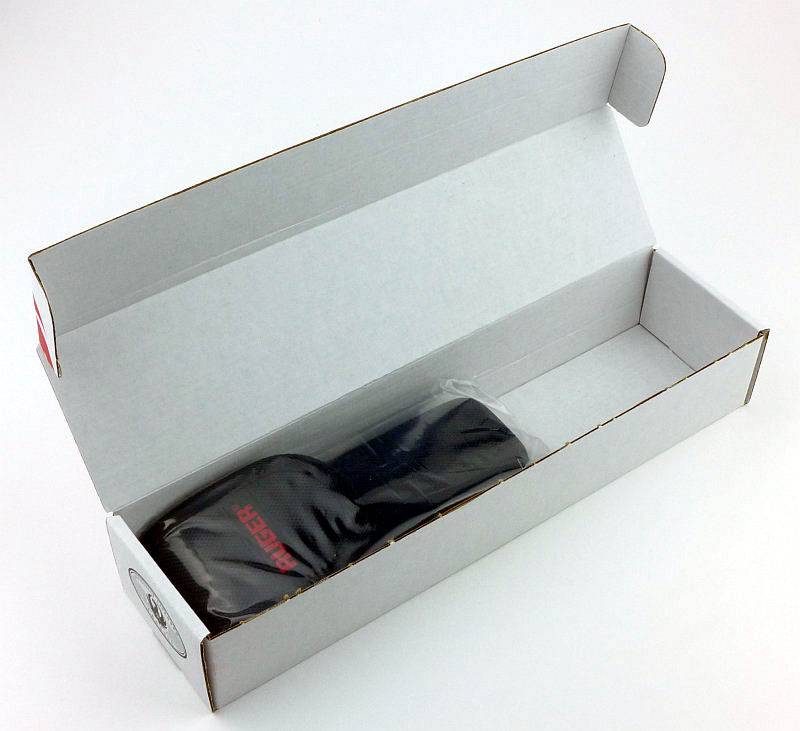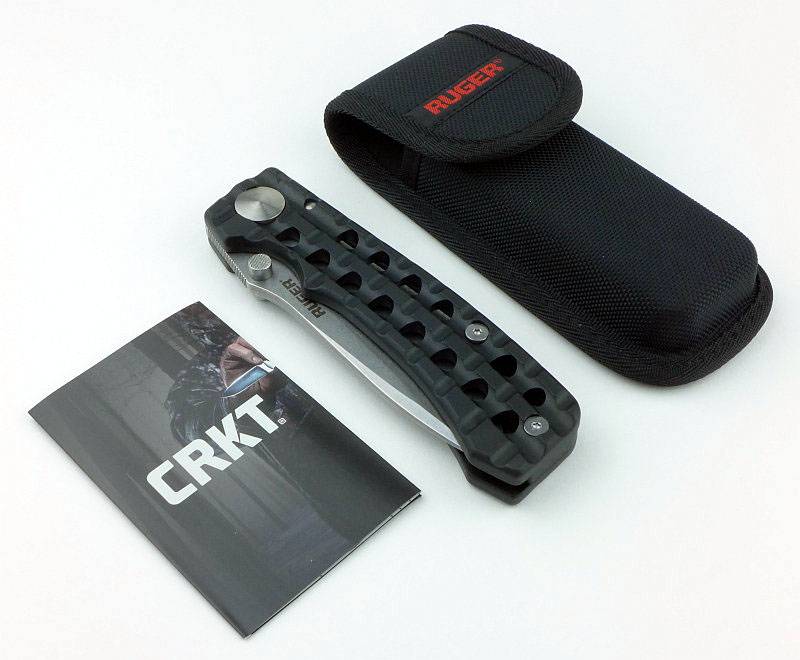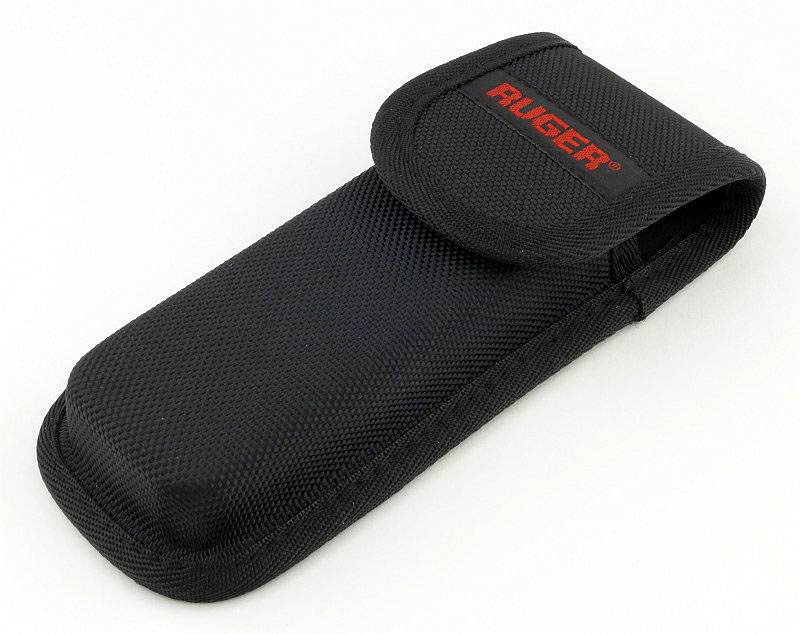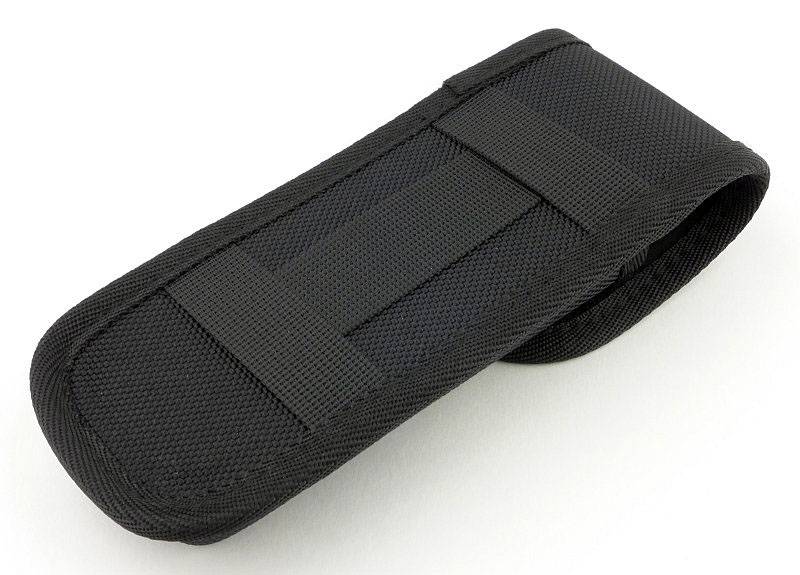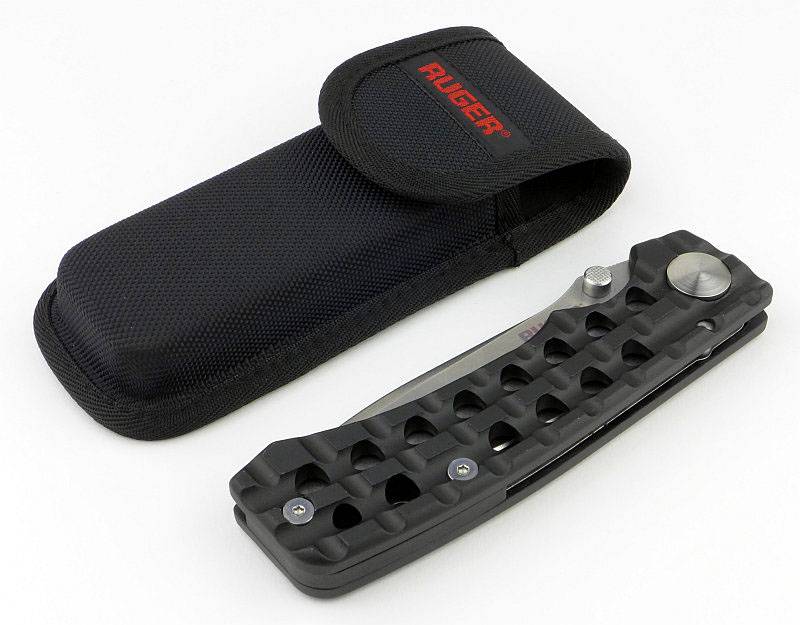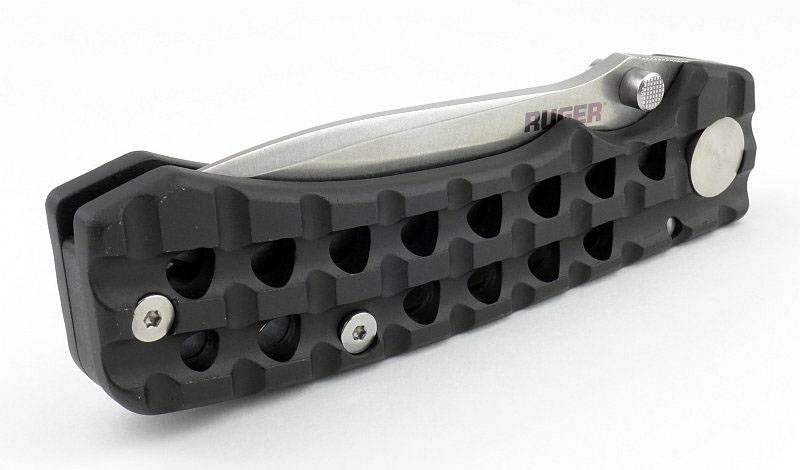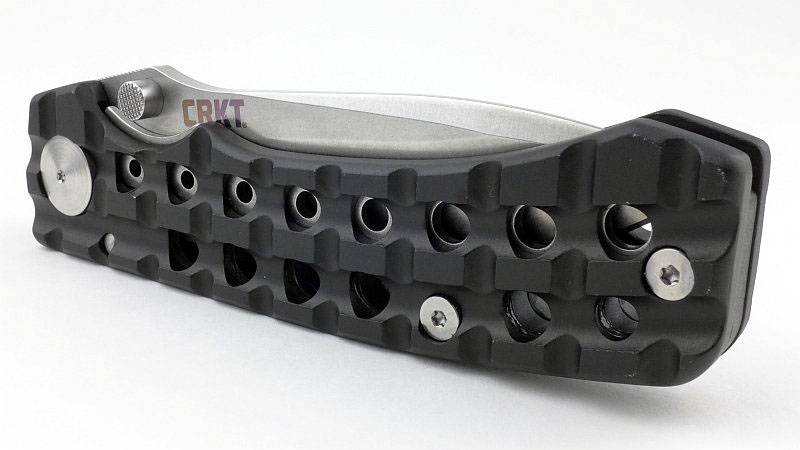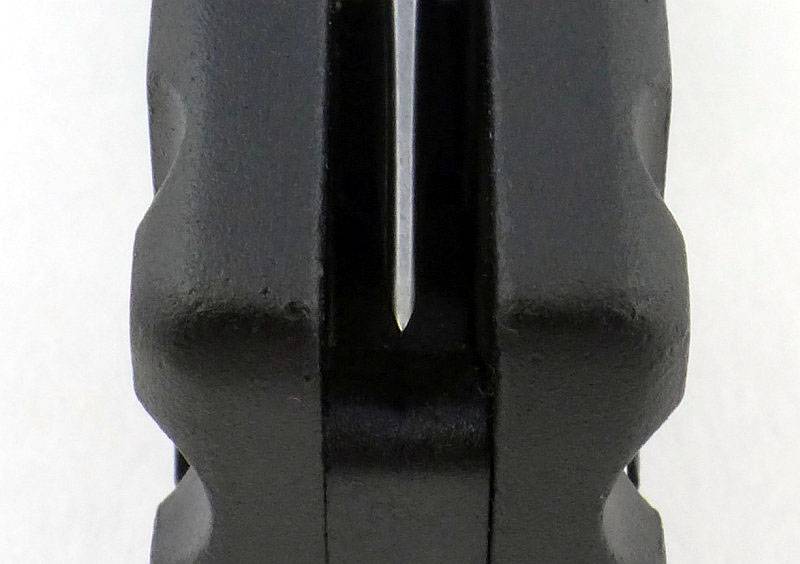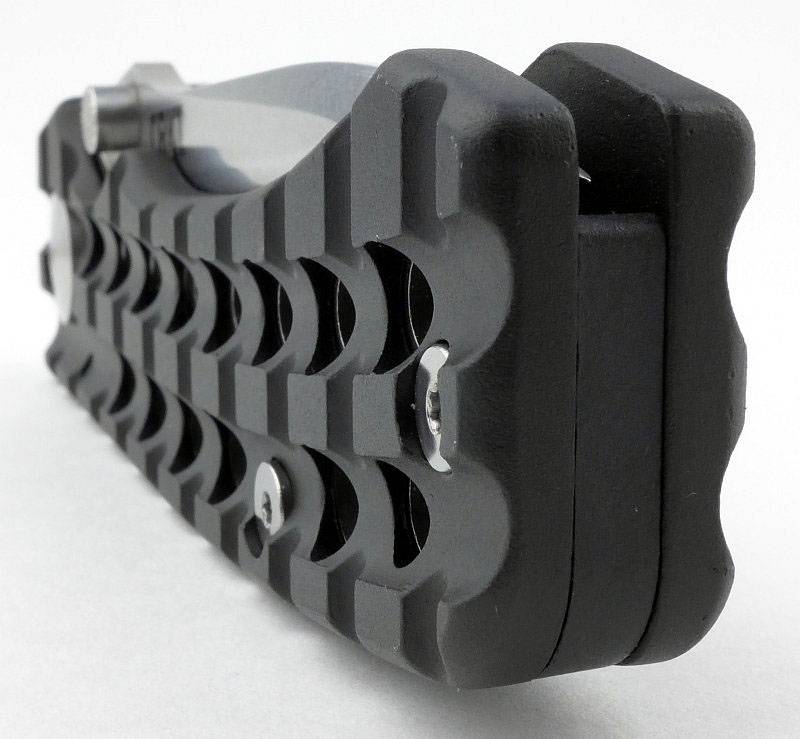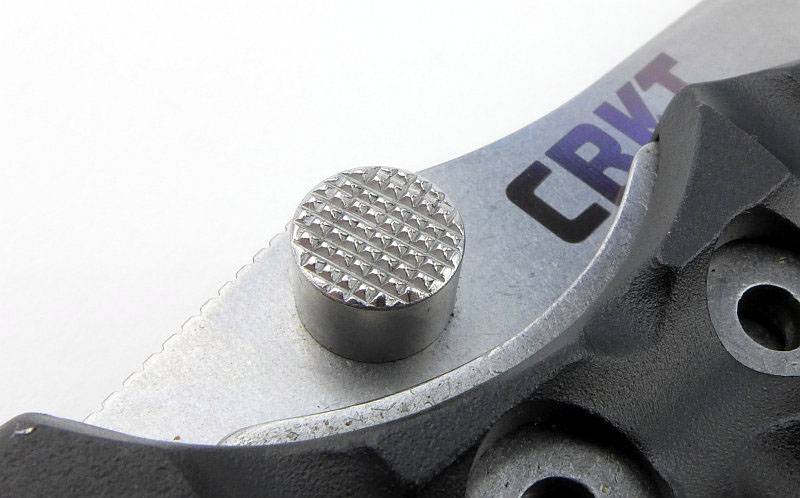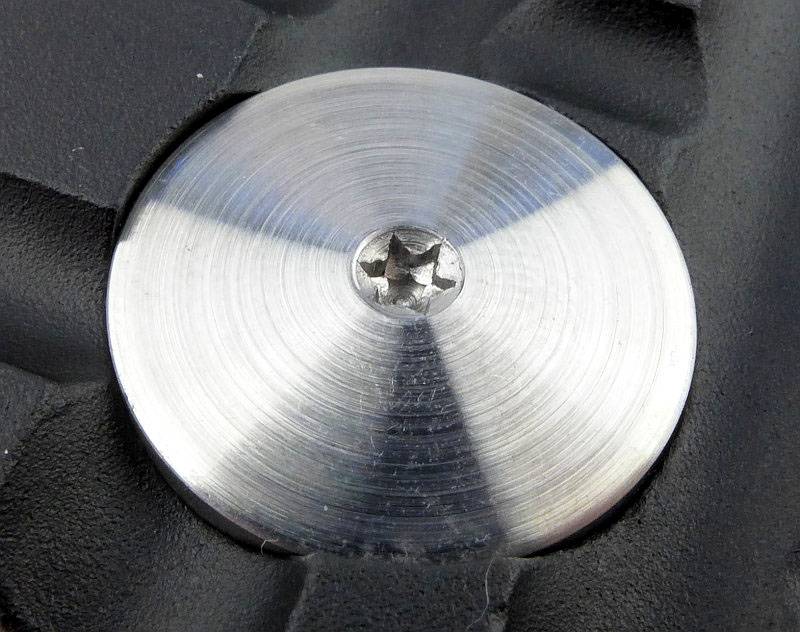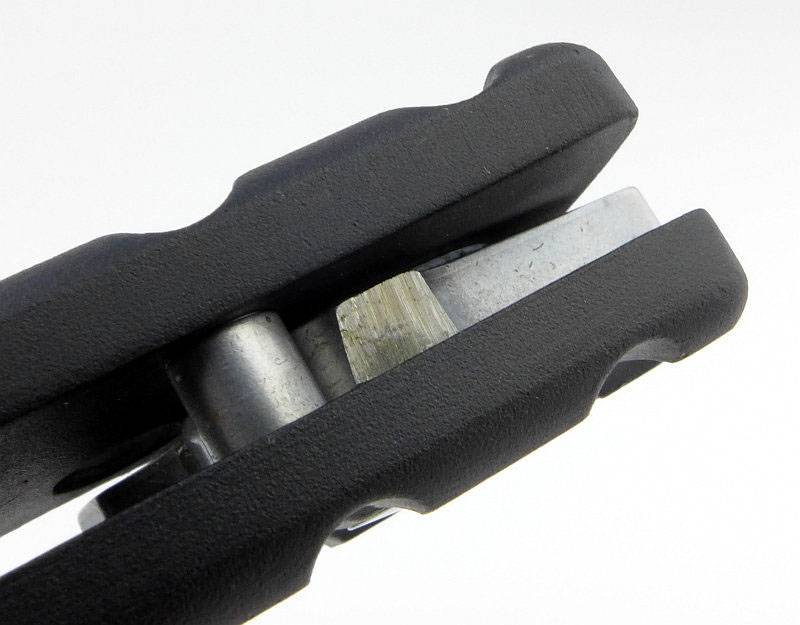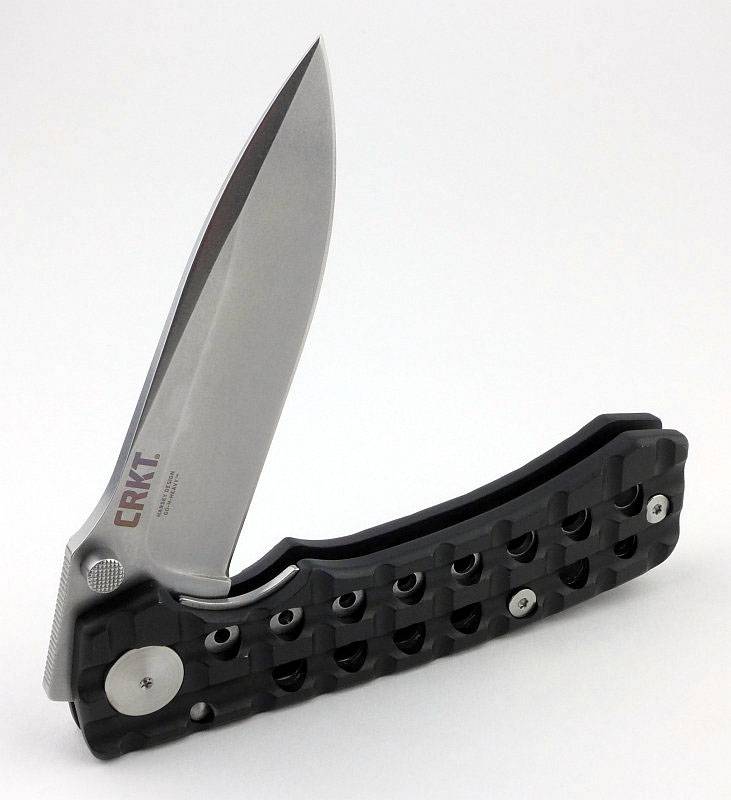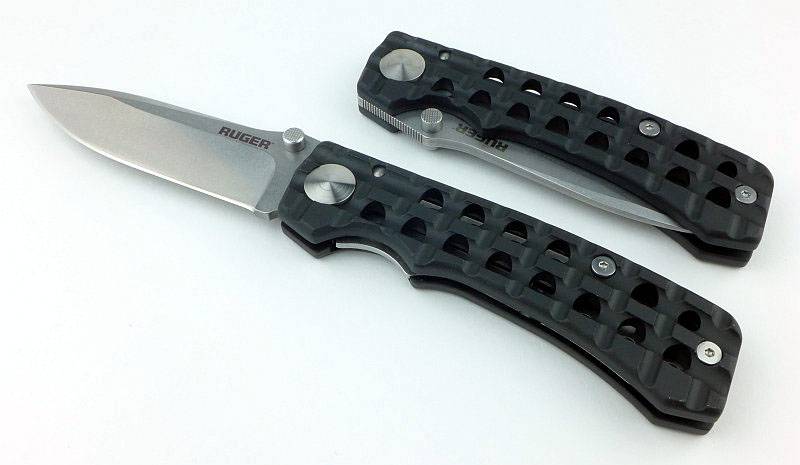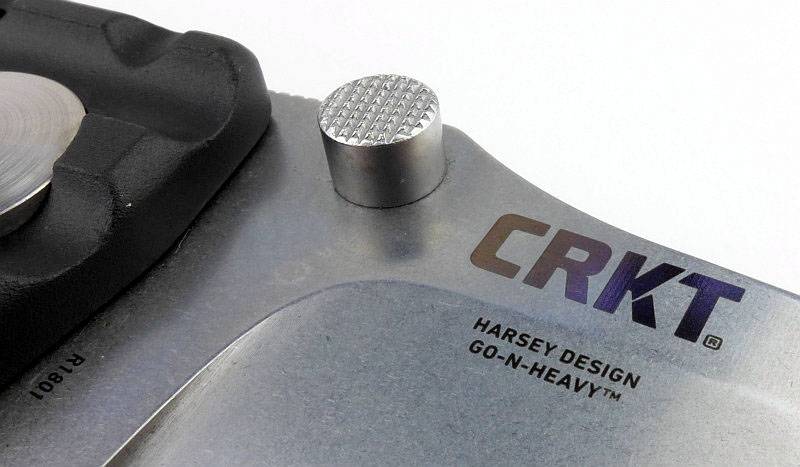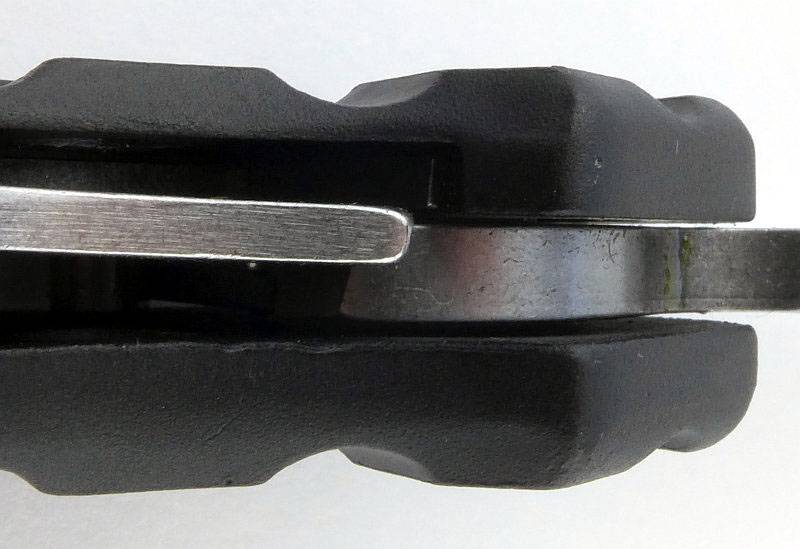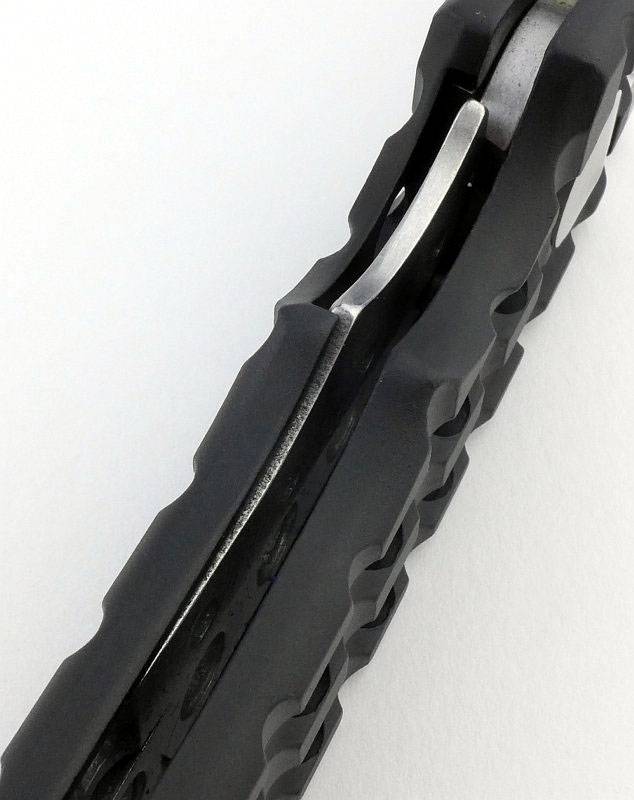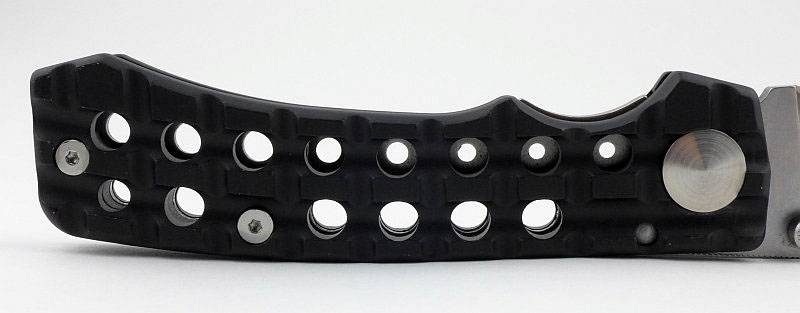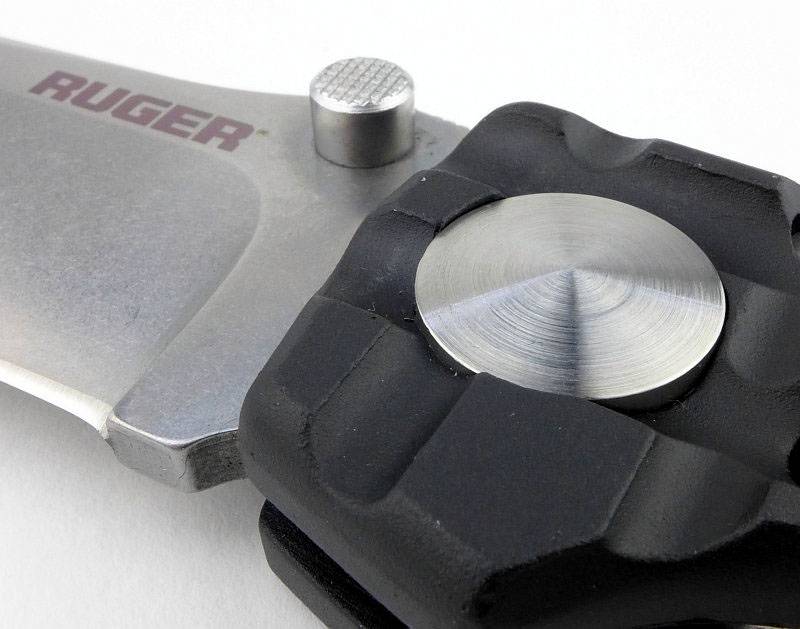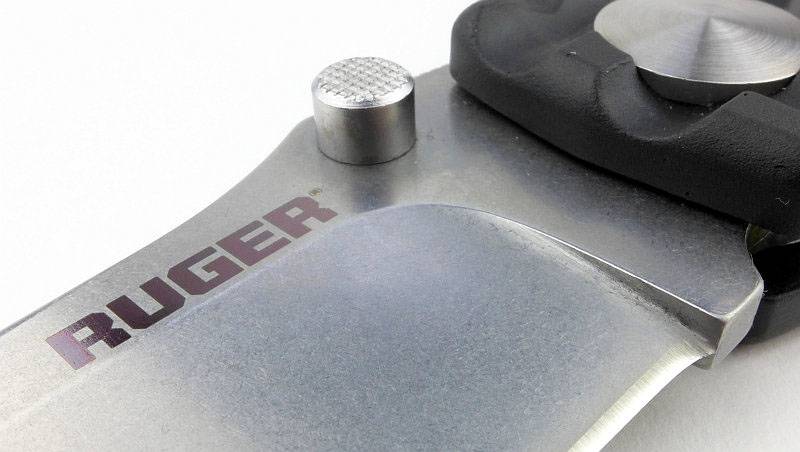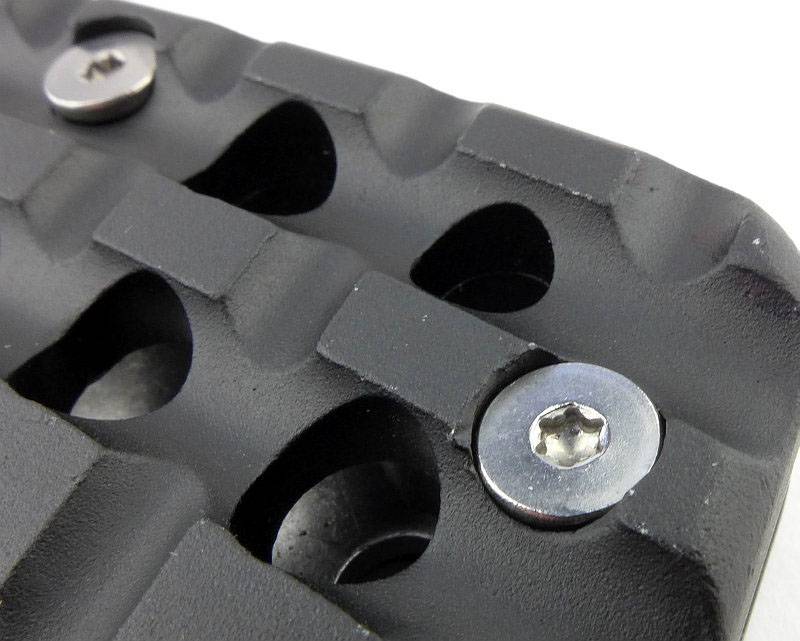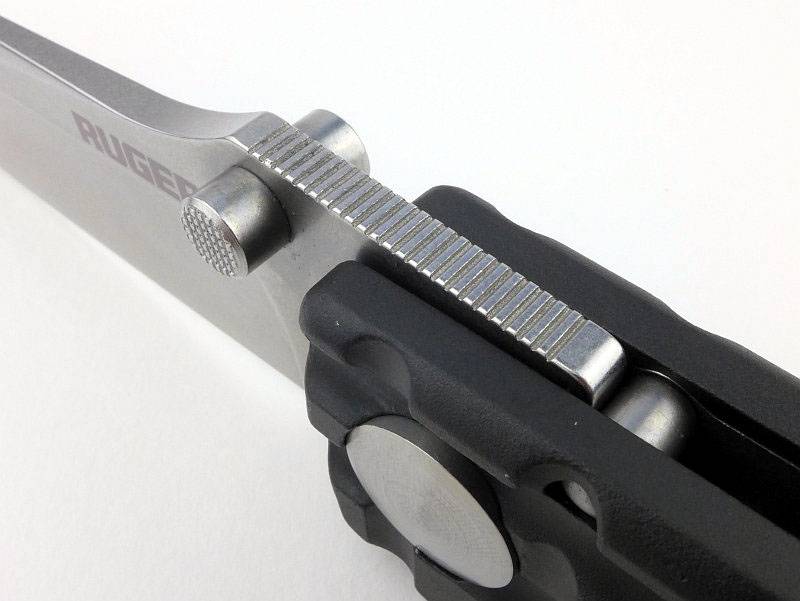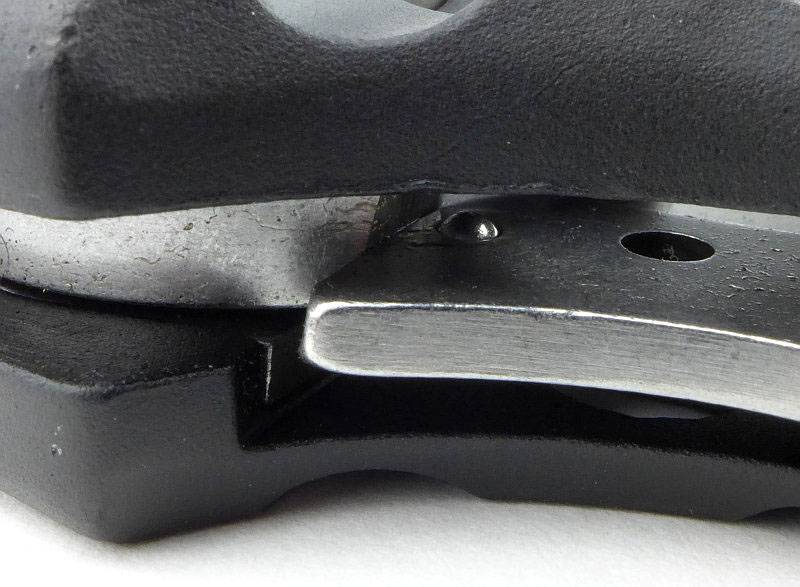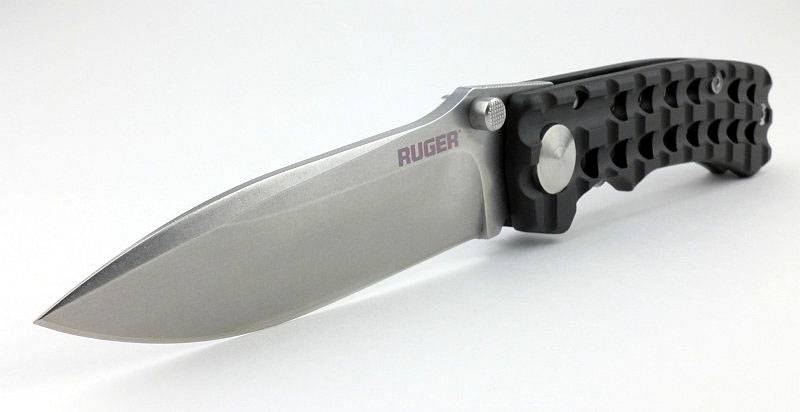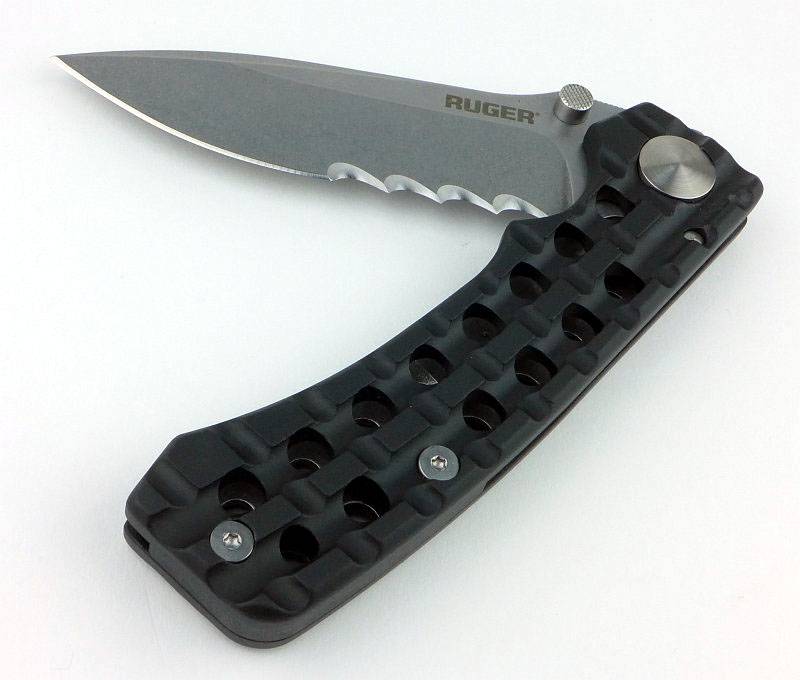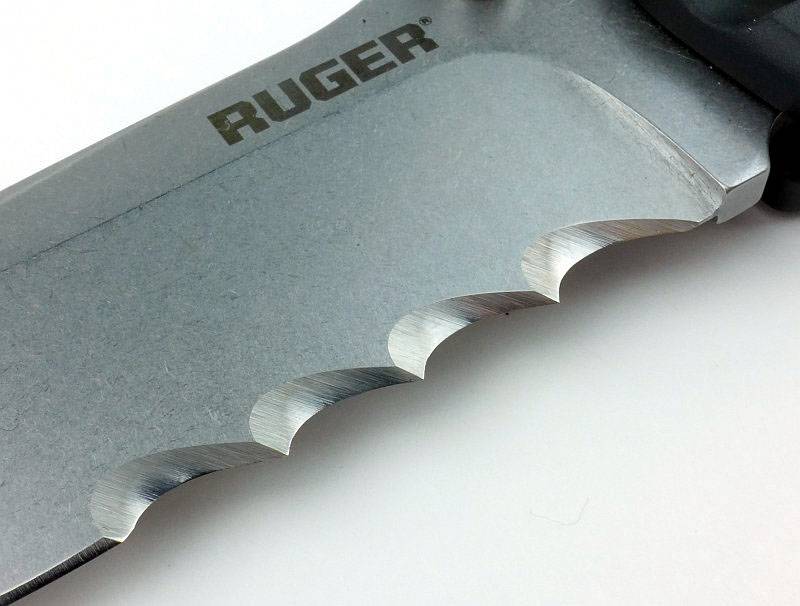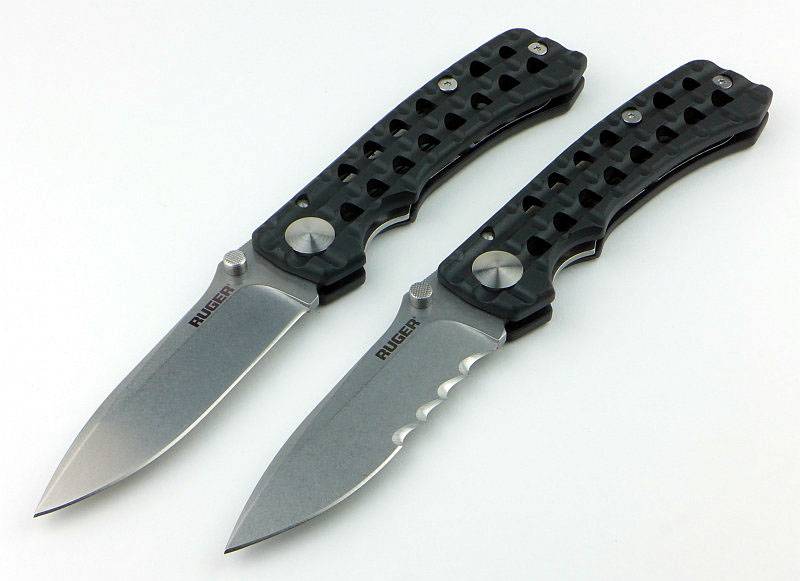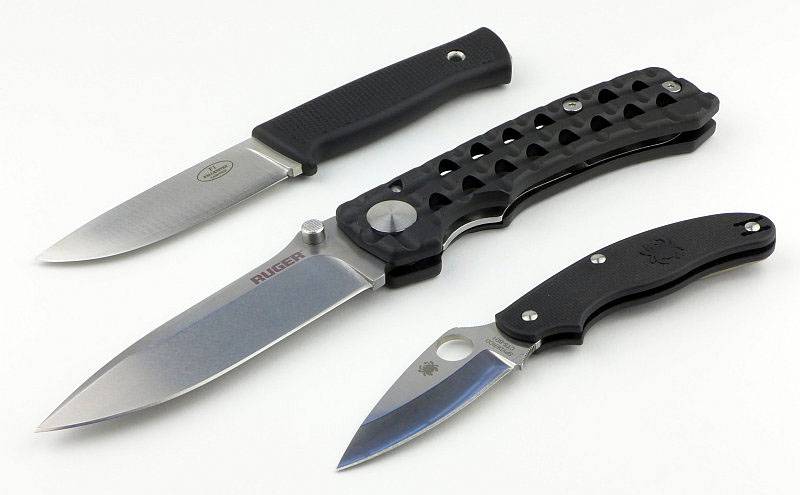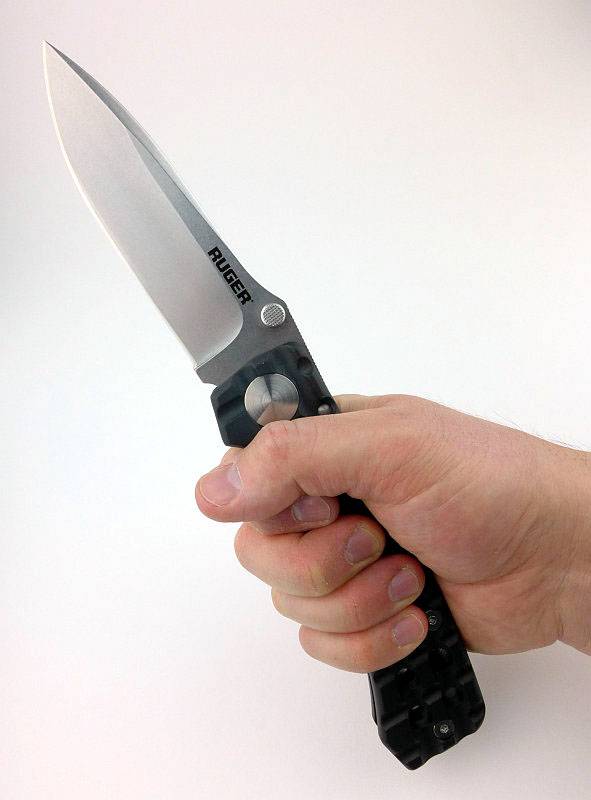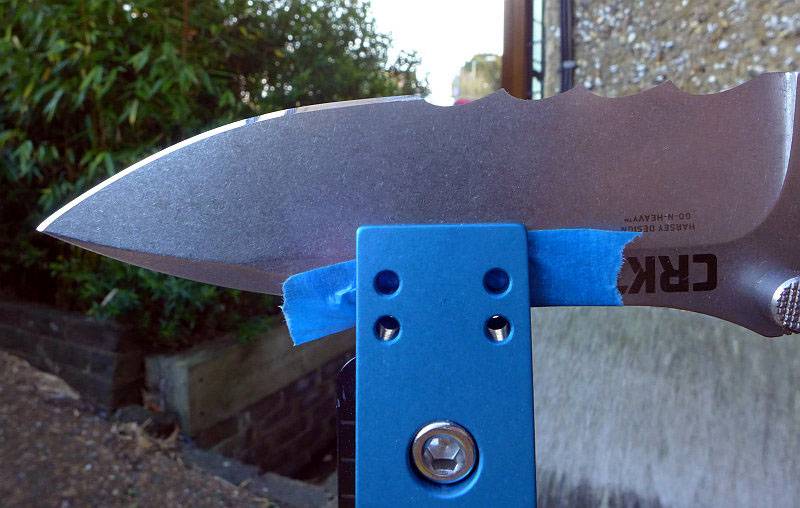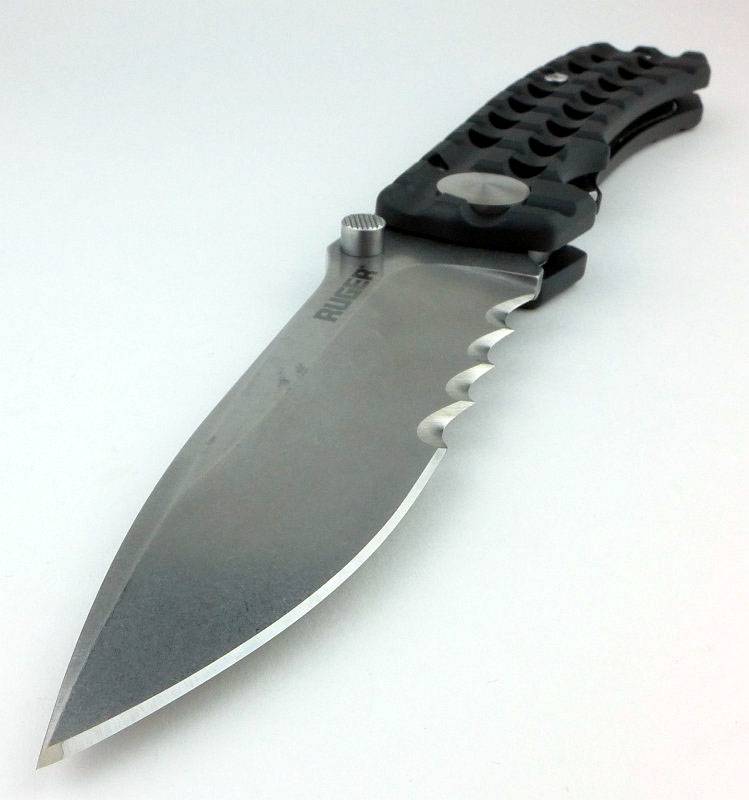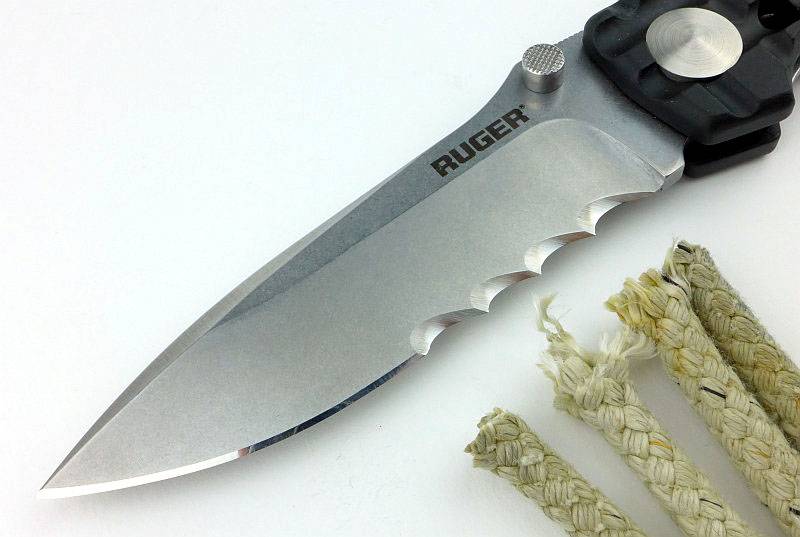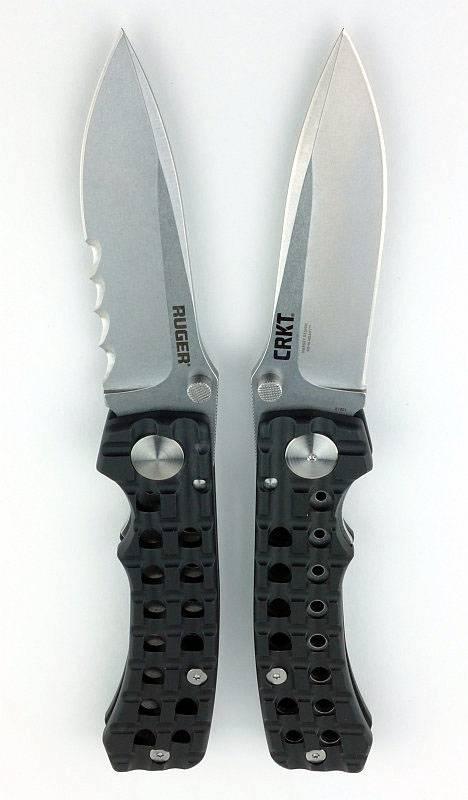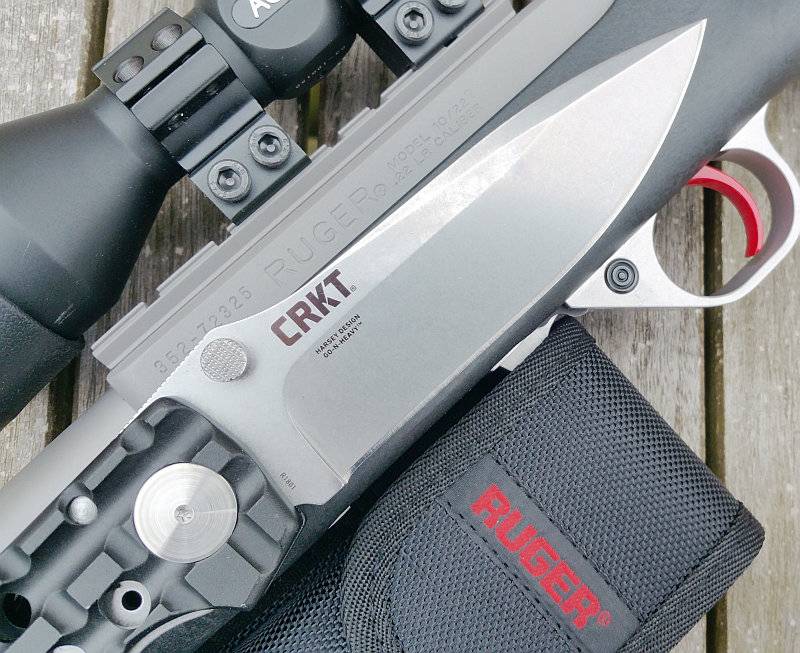Fenix have been taking classic lights from their range and creating ‘Ultimate Edition’ versions, pushing their performance to the maximum. The TK15 has now been ‘UE’ed to make the TK15UE with uprated output, throw and a new stainless steel bezel.
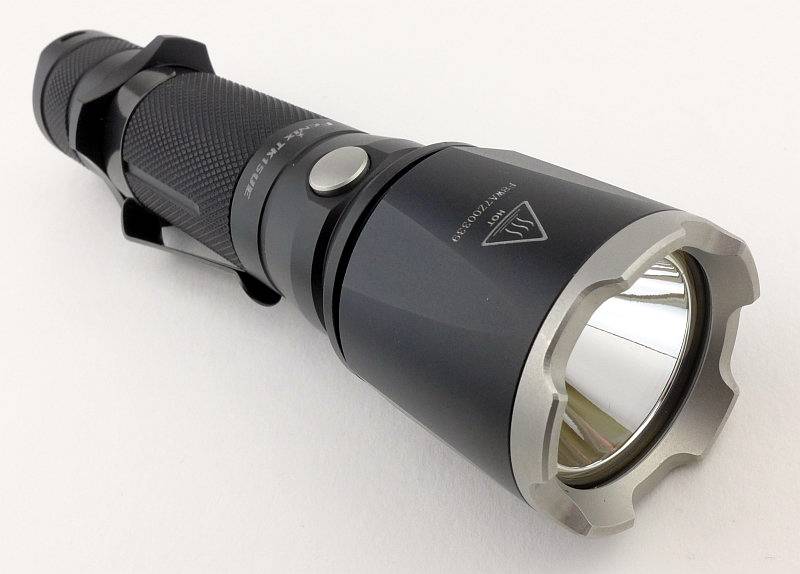
Taking a more detailed look:
The TK15UE comes in Fenix’s standard packaging.
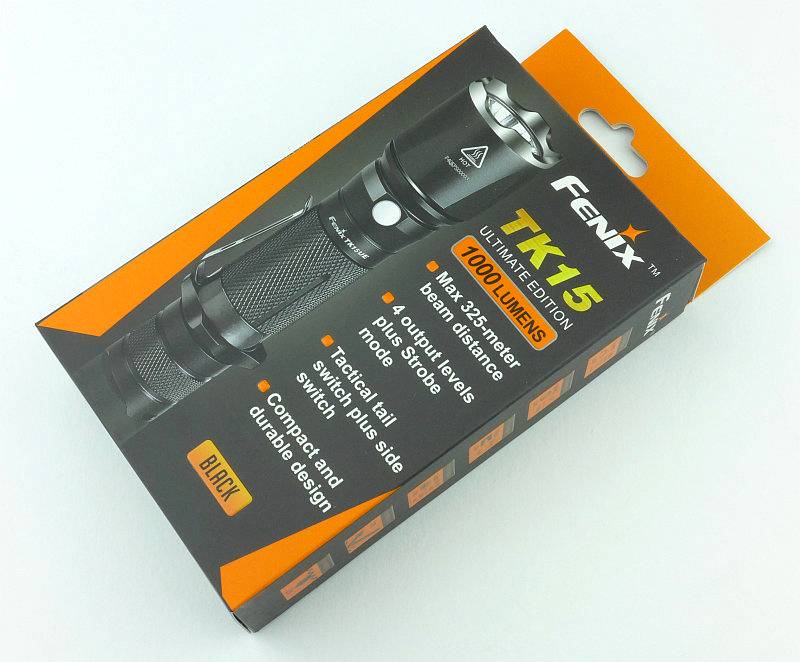
Included with the TK15UE are the instructions, a holster, a lanyard, a couple of O-rings and a spare switch boot.
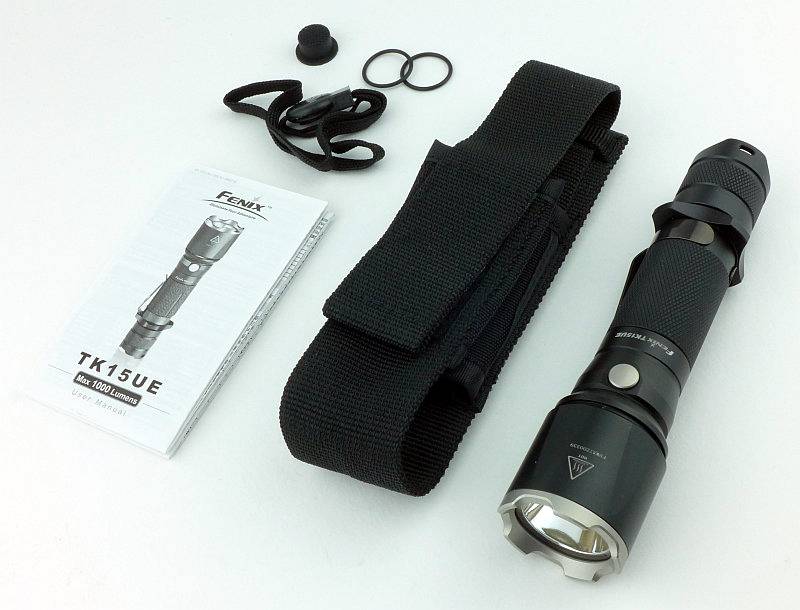
Before we move on, the holster is worth lingering on a little longer.
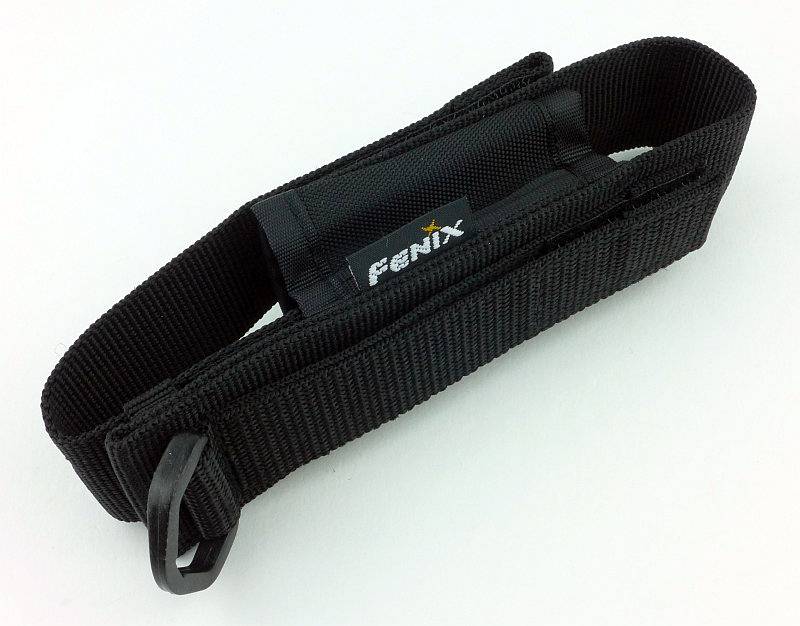
On the back there is a choice of a D-ring, fixed loop, and Velcro closing loop.
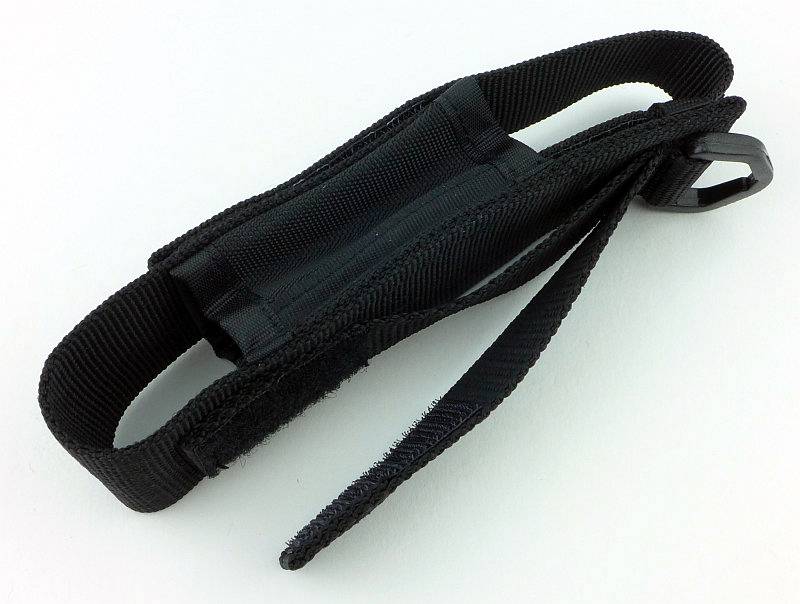
There is something a little different here. The holster flap has a retaining strap over it and inside the holster it is fixed with Velcro.
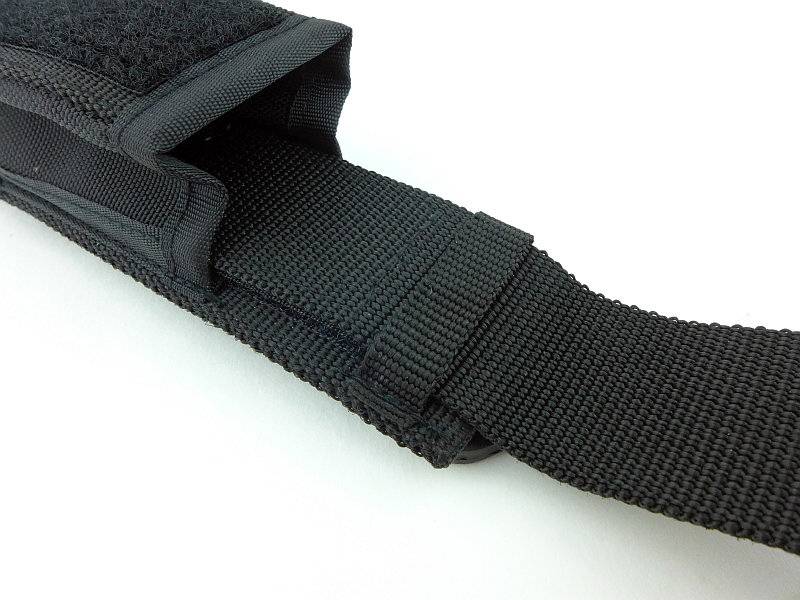
You can just see inside that the flap extends most of the way down the inside of the holster.
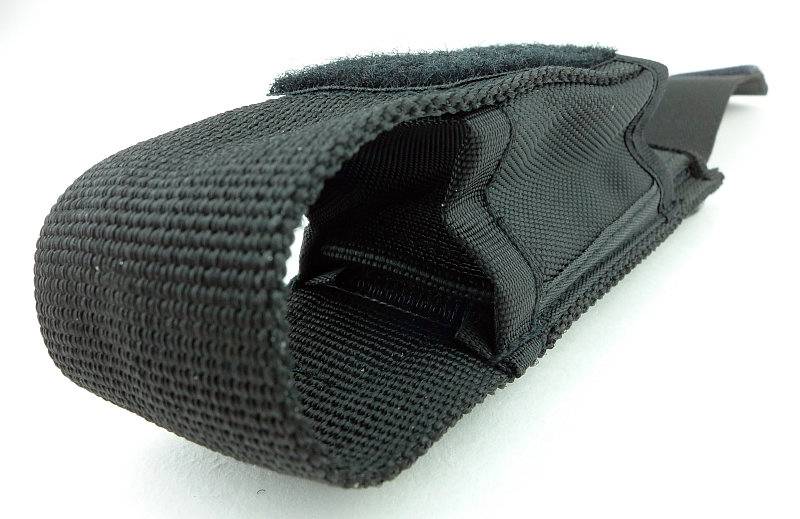
The entire flap can be undone and either removed or adjusted to loosen or tighten the fit, or even accommodate a different length light.
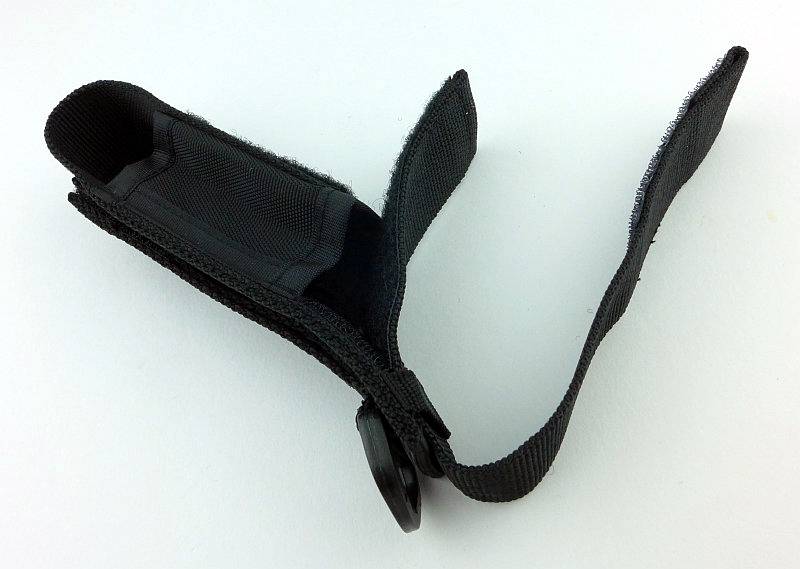
As supplied, the holster is correctly configured for the TK15UE.
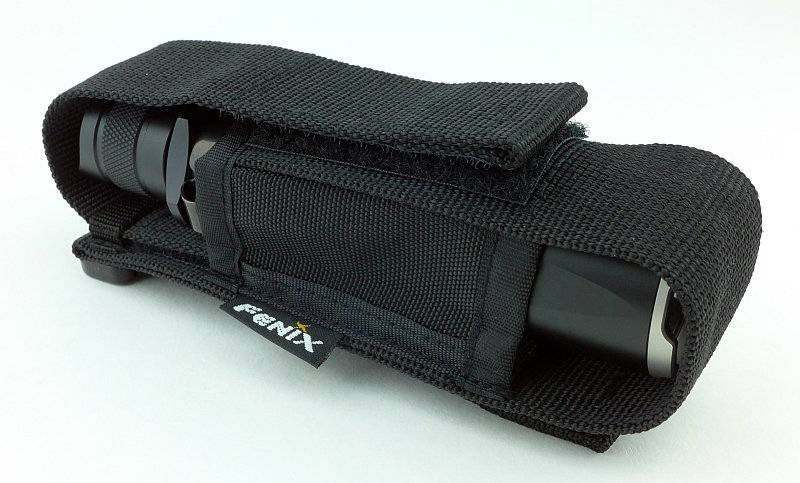
The most obvious sign that this is something a bit different to the previous TK15s is the Stainless Steel bezel.
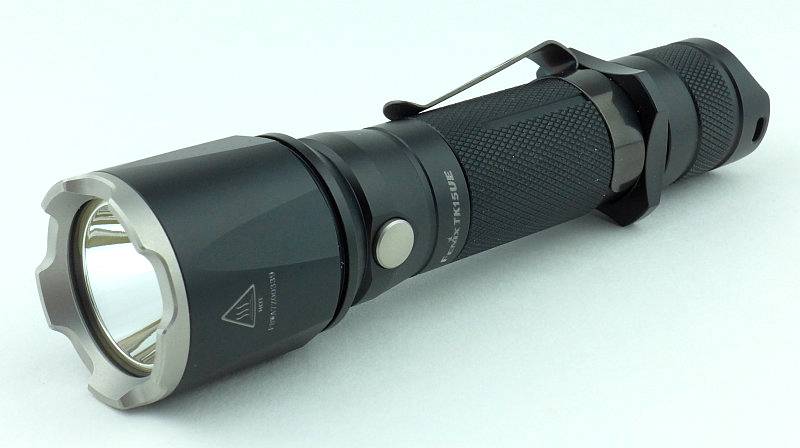
Let’s have a look at how the TK15UE and an older TK15 compare. This is the TK15C. So the holster is more than the basic one the TK15C comes with.
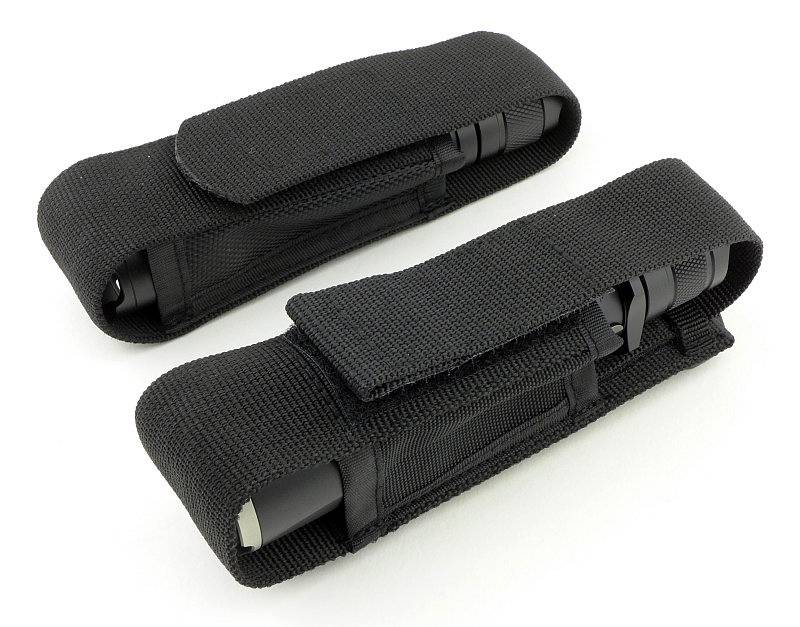
Dimensions are all very similar. The TK15C I’m comparing with here has had the clip removed as well as the tactical grip ring because it has been used gun-mounted.
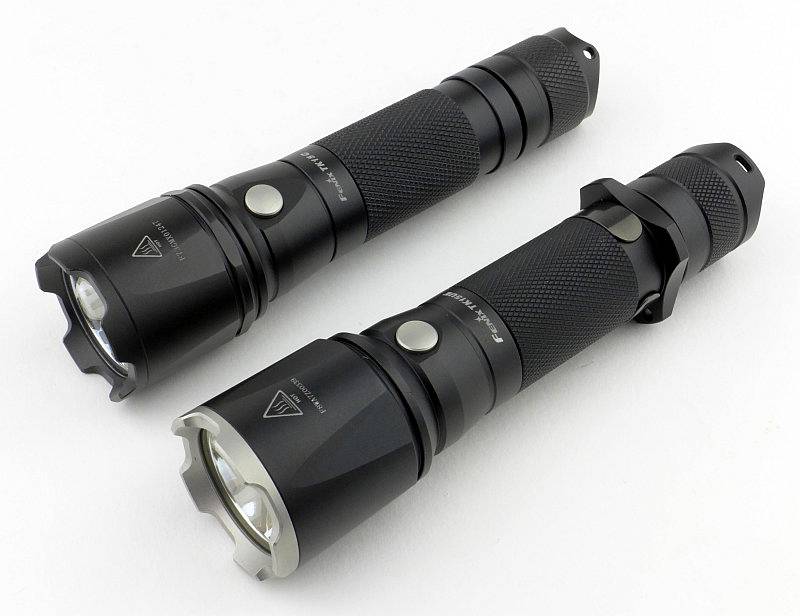
Going in close to the engraving of the model, the knurling and mode switch.
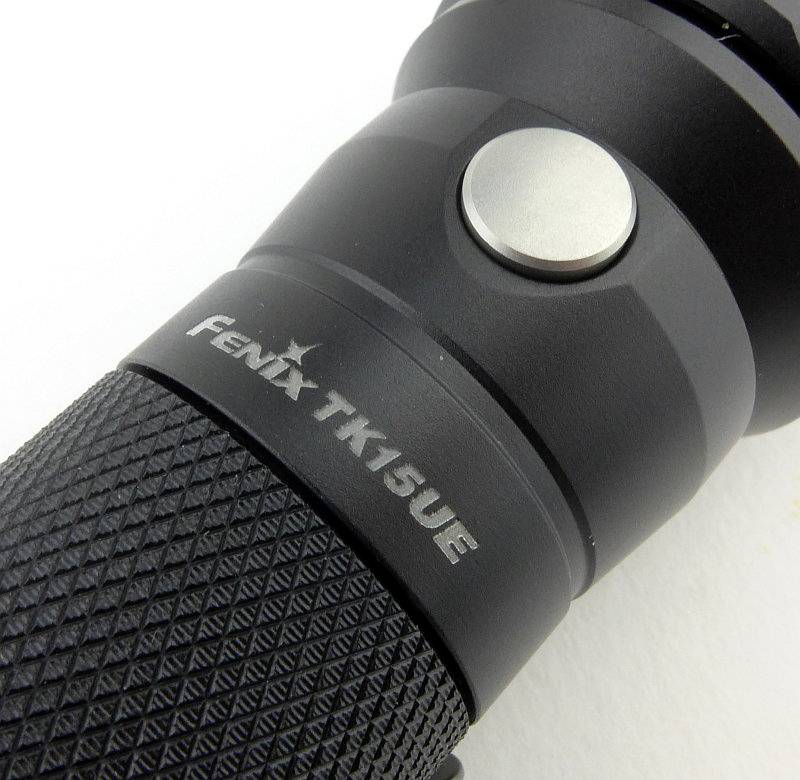
All the edges of the clip are nicely rounded, and there are no sharp corners to eat away at your pockets (just the knurling under the clip).
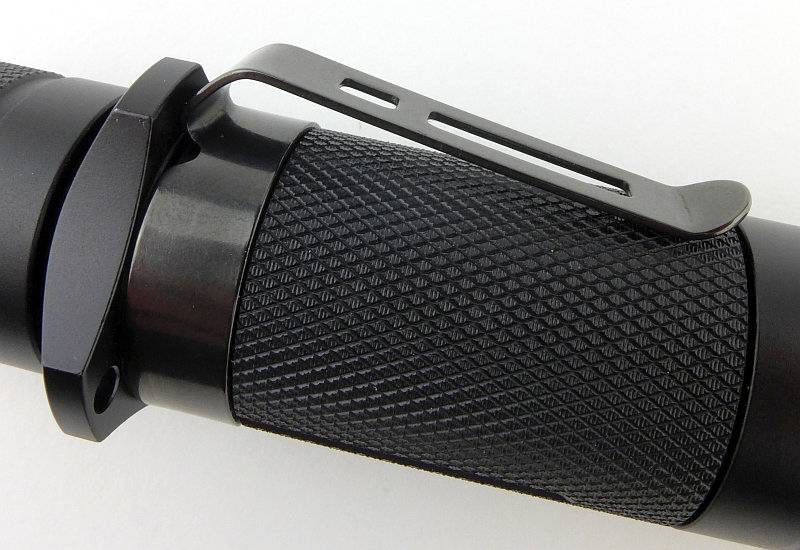
The switch button does protrude, so no tail-standing, and it has two raised areas to provide the switch with some protection from accidental activation.
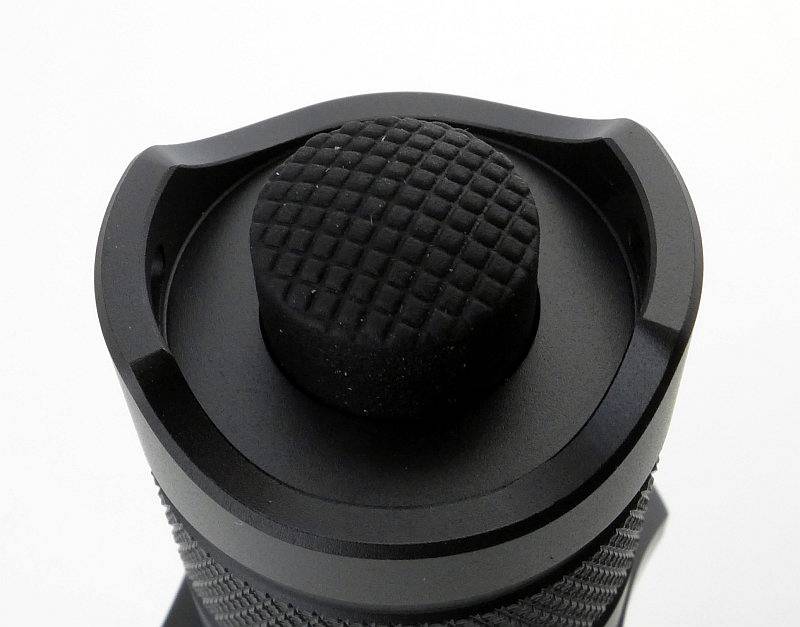
As with the stainless bezels on other Fenix lights, the edges have been bevelled to make them kind to the holster and your pockets.
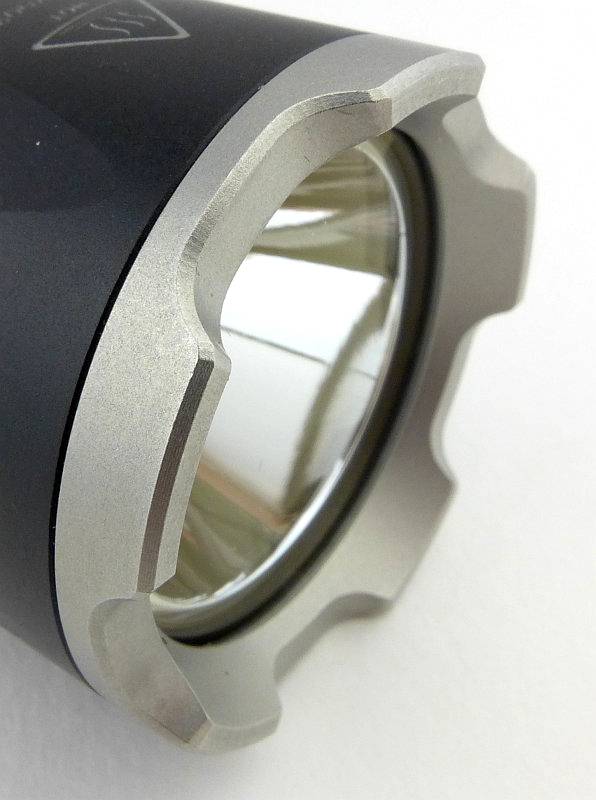
The inner edges of the bezel are crisp without being sharp.
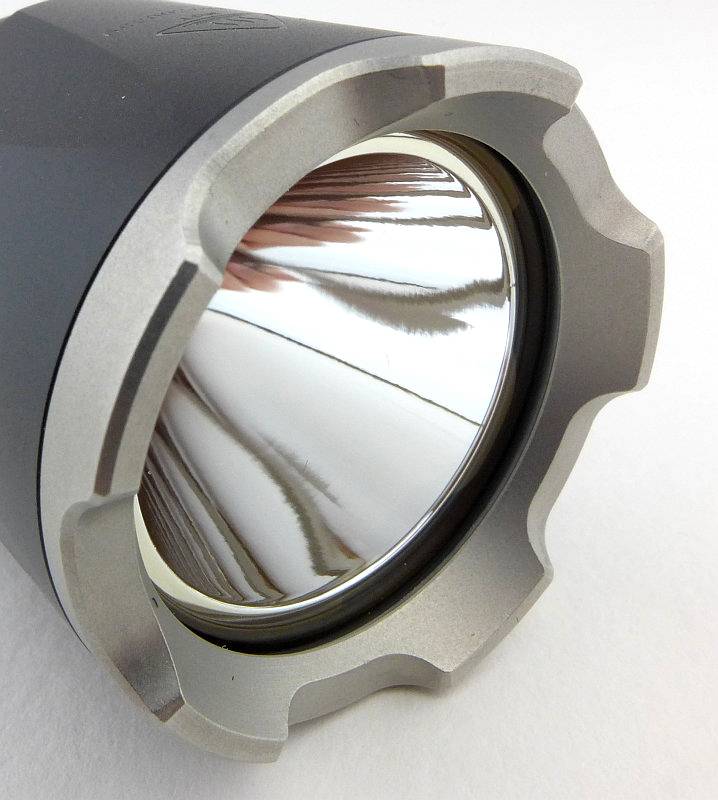
Fenix’s preferred trapezoid threads are used.
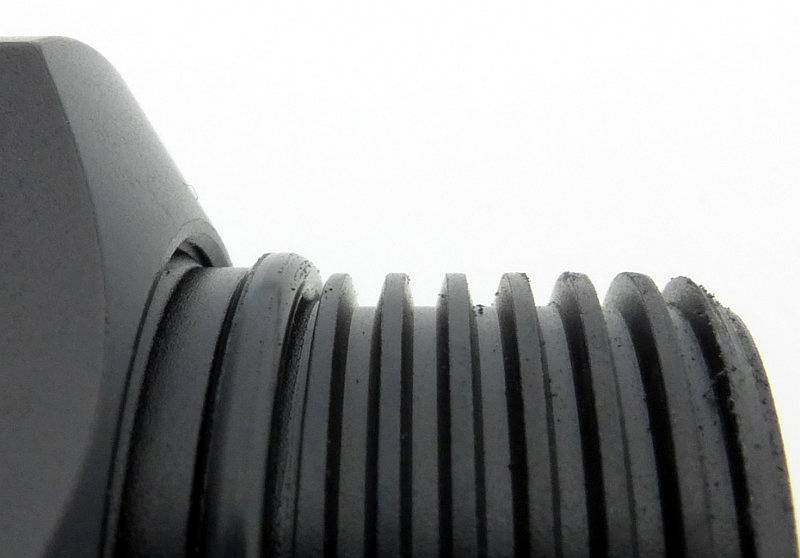
The end of the battery tube is the electrical contact that connects to the tail-cap contact.
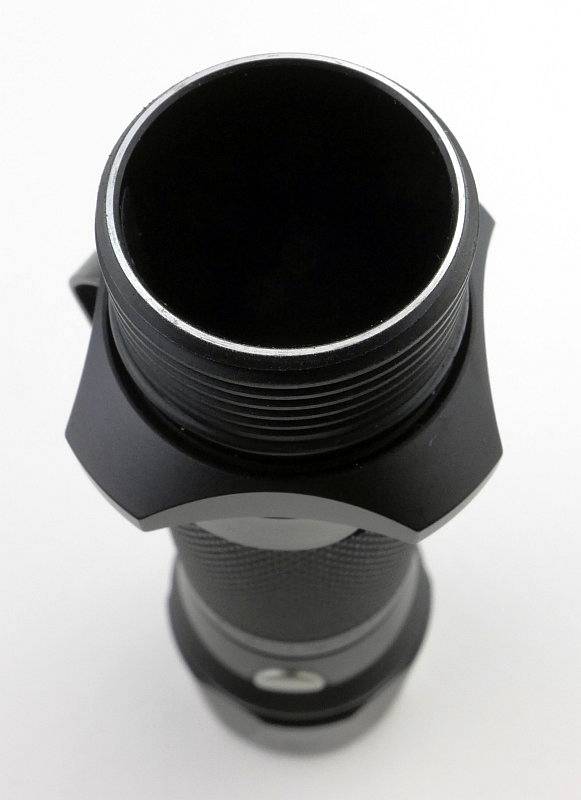
Inside the tail-cap are the battery tube contact and the negative terminal sprung contact.
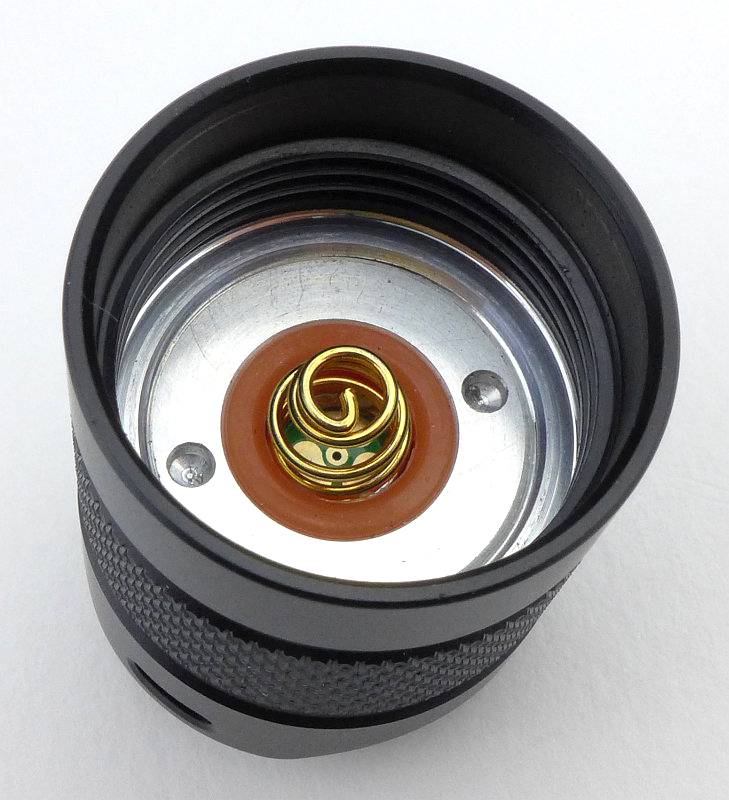
With the TK15UE, the head will unscrew.
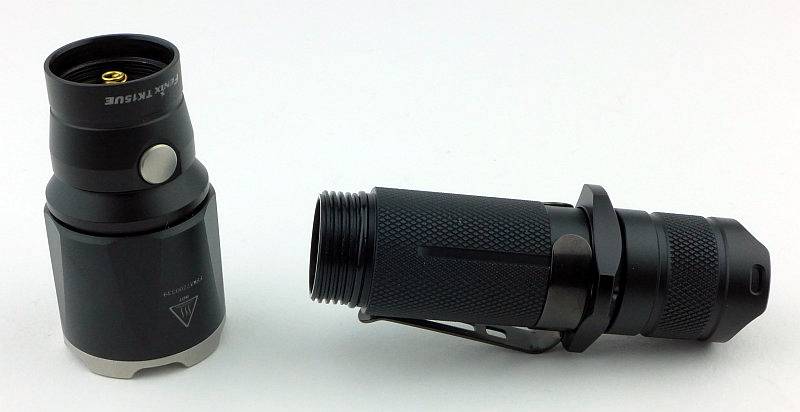
As the battery tube can be removed we can get a good look at those contacts in the head.
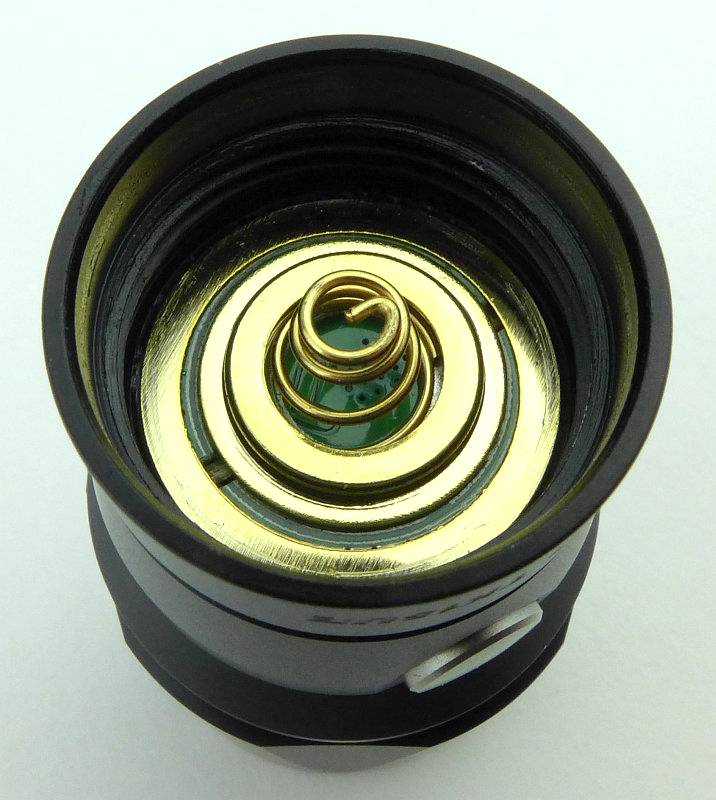
Just like previous TK15 models, the TK15UE has a smooth reflector.
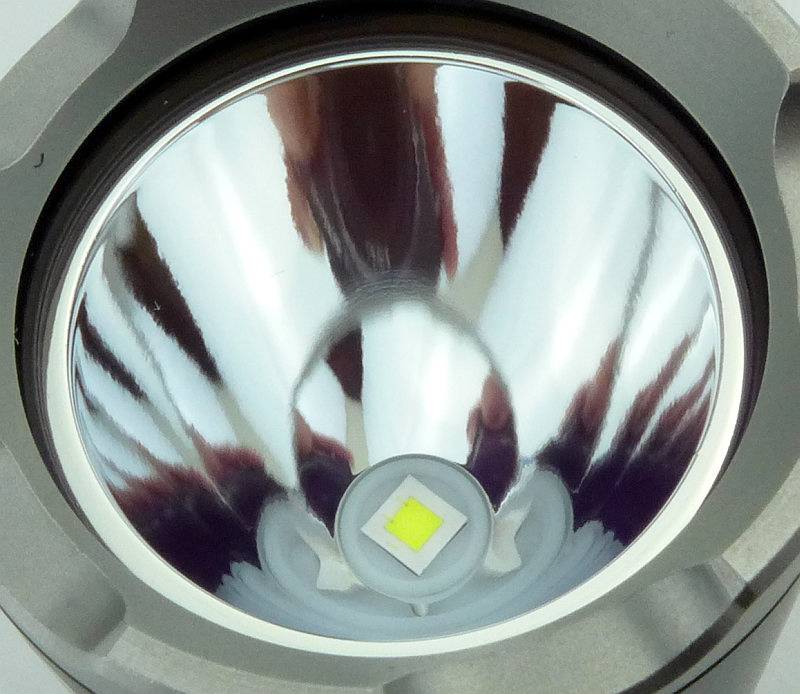
In the centre of that reflector is the CREE XP-L HI V3 LED.
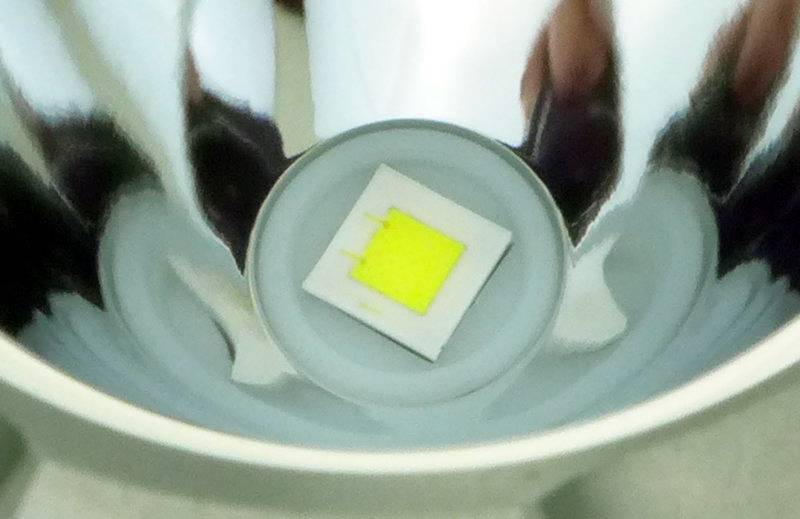
Looking straight into the TK15UE’s reflector.
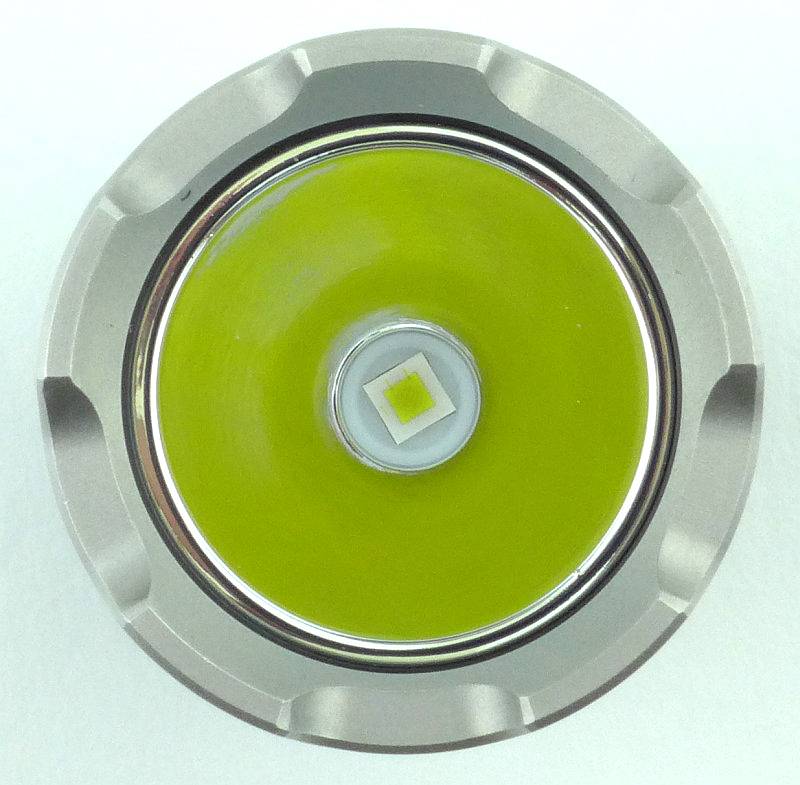
The TK15UE is one of the more compact single 18650 lights. Not as compact as the small-head types such as the PD32, but it does have a big enough reflector to give it some punch.
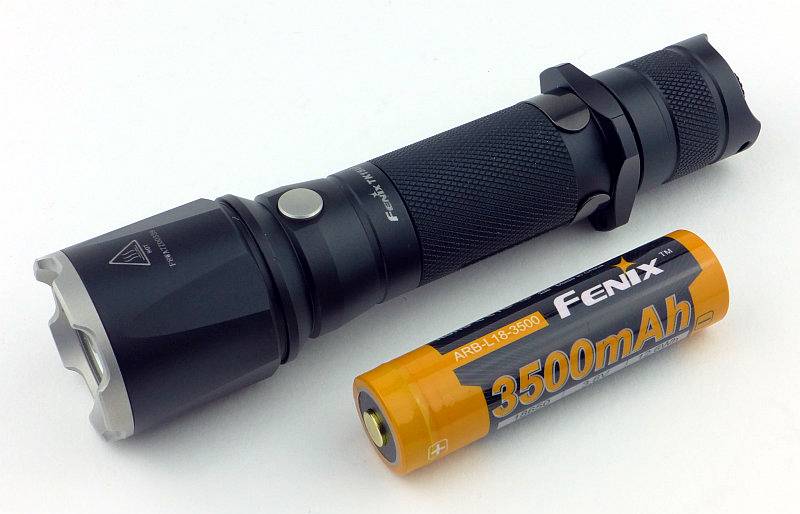
You can take off the tactical grip ring by unscrewing it.
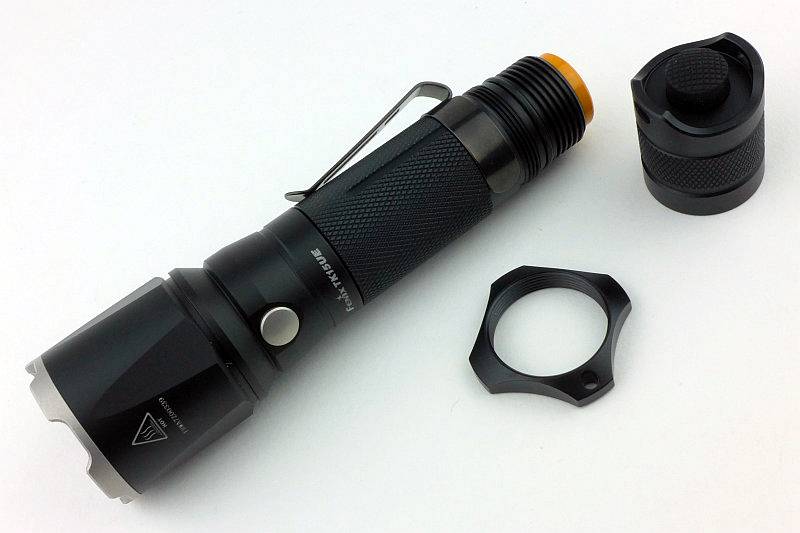
Unless you buy the optional thread protector you will see the grip ring threads.
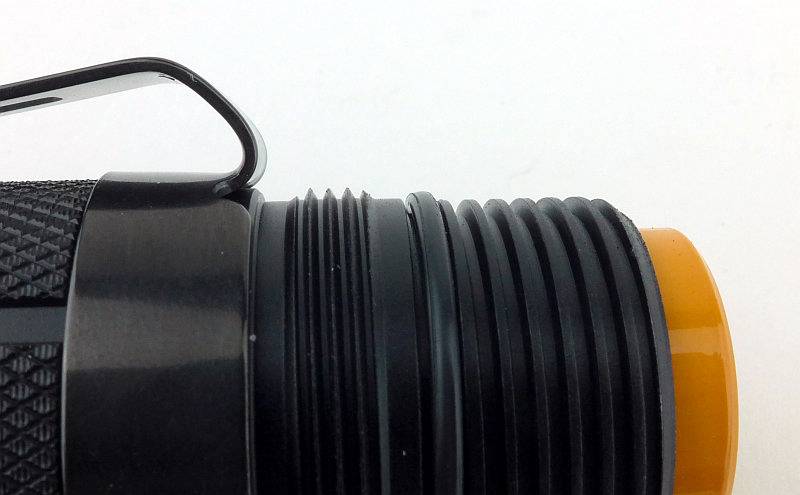
The beam
Please be careful not to judge tint based on images you see on a computer screen. Unless properly calibrated, the screen itself will change the perceived tint.
The indoor beamshot is intended to give an idea of the beam shape/quality rather than tint. All beamshots are taken using daylight white balance. The woodwork (stairs and skirting) are painted Farrow & Ball “Off-White”, and the walls are a light sandy colour called ‘String’ again by Farrow & Ball. I don’t actually have a ‘white wall’ in the house to use for this, and the wife won’t have one!
Indoors the TK15UE is not at its best, as it is quite a throw orientated beam. The hotspot is bright and well formed. Spill is relatively dim and narrow but usable. There is enough balance in the beam to make it OK indoors.
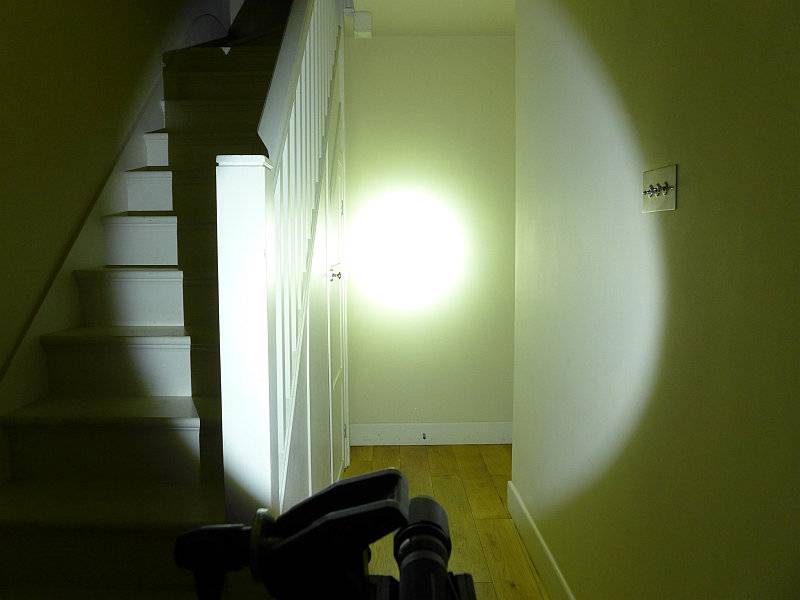
But it is when you get a bit more range that the TK15UE really starts to shows what it is made of. The throw belies its compact size, and with the ‘UE’ upgrade it is a really punchy little light.
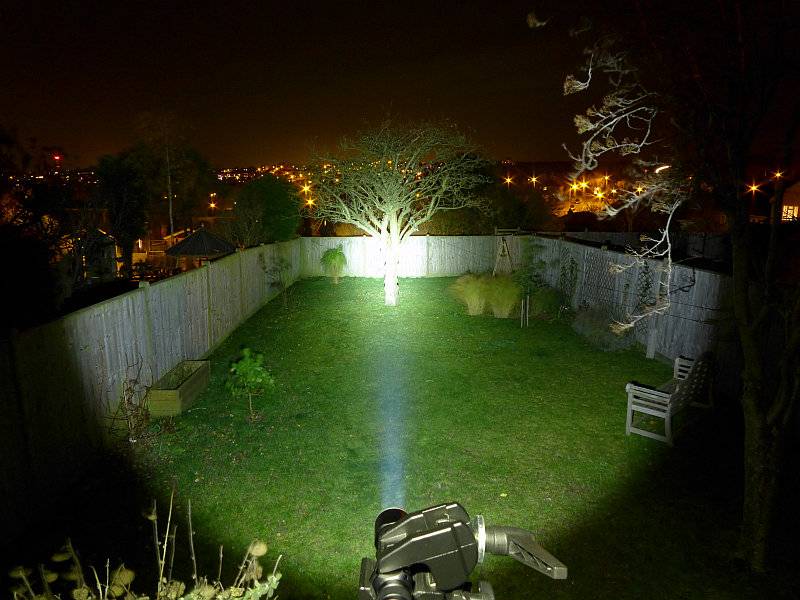
Modes and User Interface:
To control the TK15 UE there is the forward-clicky tail switch, and the mode selection switch just behind the head.
Click ON (or half press for momentary action) the tail switch to access the last used constant mode. With the tail switch on, press the mode button to cycle though the modes.
The standard modes are Low, Medium, High and Turbo.
There is a hidden Strobe mode accessed by holding the modes selection switch in for 1s. Strobe is not memorised as a last used mode.
Batteries and output:
The TK15UE runs on 18650 or 2xCR123.
To measure actual output, I built an integrating sphere. See here for more detail. The sensor registers visible light only (so Infra-Red and Ultra-Violet will not be measured).
Please note, all quoted lumen figures are from a DIY integrating sphere, and according to ANSI standards. Although every effort is made to give as accurate a result as possible, they should be taken as an estimate only. The results can be used to compare outputs in this review and others I have published.
| ___________________________________________ | ________________________________ | ________________________________ |
| Fenix TK15UE using specified cell | I.S. measured ANSI output Lumens | PWM frequency or Strobe frequency (Hz) |
| ___________________________________________ | ________________________________ | ________________________________ |
| Turbo – Fenix ARB-L18-3500 | 776 | 0 |
| High – Fenix ARB-L18-3500 | 377 | 0 |
| Medium – Fenix ARB-L18-3500 | 164 | 0 |
| Low – Fenix ARB-L18-3500 | 14 | 0 |
* Beacon and Strobe output measurements are only estimates as the brief flashes make it difficult to capture the actual output value.
Peak Beam intensity measured 31100 lx @1m giving a beam range of 353m.
There is no parasitic drain.
I was slightly surprised by the Turbo output runtime trace as unlike most Fenix lights the TK15UE does not appear to run with a regulated output. The trace was recorded using cooling, so it is unlikely that this is due to overheat protection, instead the TK15UE seems to run at maximum output with that output sagging as the cell becomes depleted. However saying that, you do get a full hour of runtime at more than 600lm, so overall the performance is still good. (This was run using Fenix’s latest ARB-L18 3500mAh cell.)
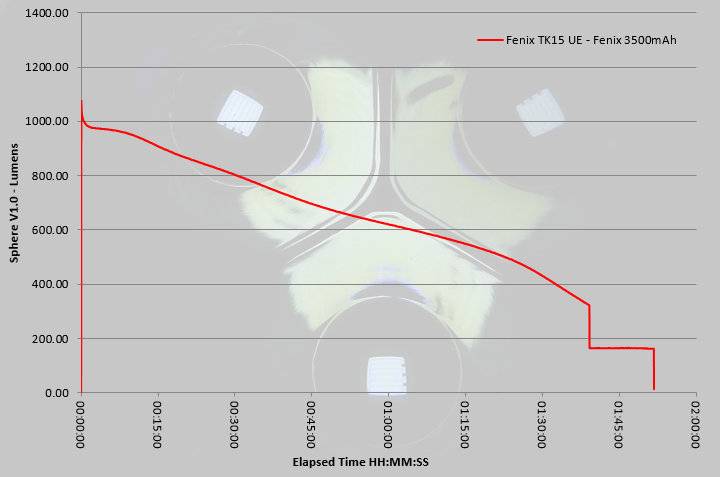
Troubleshooting
This section is included to mention any minor niggles I come across during testing, in case the information helps anyone else.
No issues were encountered during testing.
As per the description of this section, this information is provided in case anyone else finds a similar ‘issue’ that might be fixed in the same way.
The TK15UE in use
By separating the mode selection to a side-switch Fenix have allowed proper momentary use of that forward-clicky tail switch. This makes for a really easy and intuitive interface and keeps things simple for any user.
Fortunately the strobe mode is reasonably well hidden and is not memorised; I’m surprised anyone still includes strobe. As those that follow me will know, I’m certainly no fan of strobe and most true tactical users I know are aware that if you strobe another person, you strobe yourself as well, so your are better off not using it at all. Thankfully with the TK15UE you need never come across strobe and can use the four constant output modes without tripping over strobe.
The TK15UE manages a balance between hotspot and spill that, although it is more oriented towards throw, is still usable at indoor distances.
When using the holster with the TK15UE inserted bezel-down, the bezel does catch in the holster before getting all the way in. Used bezel-up, this does not happen. It seems to be due to the adjustable flap taking up more space inside so the bezel catches on the inside of the holster. To get it all the way into the holster bezel-down you need to twist the TK15UE as you insert it.
There are smaller single 18650 lights, but the TK15UE is still compact enough to make it easy to carry, yet that slightly larger head is enough to give it a nice strong beam. Even with the upgrades to the head and LED, Fenix have kept the character of the TK15 but made it significantly brighter.
I’ve always felt the TK15 was an unsung hero in the Fenix line-up, quietly getting on with the job while others took the glory. In the Ultimate Edition, the TK15UE can now take some of the limelight and hopefully get a bit more recognition.
Review Summary
| _______________________________________________ | _______________________________________________ |
| Things I like | What doesn’t work so well for me |
| _______________________________________________ | _______________________________________________ |
| Significantly boosted output compared to previous TK15 models. | Turbo output not regulated. |
| Excellent throw from a compact head. | Bezel catches in holster when used bezel down. |
| Simple user interface. | Can accidentally hit the mode switch especially if wearing gloves. |
| Stainless Steel Bezel. |
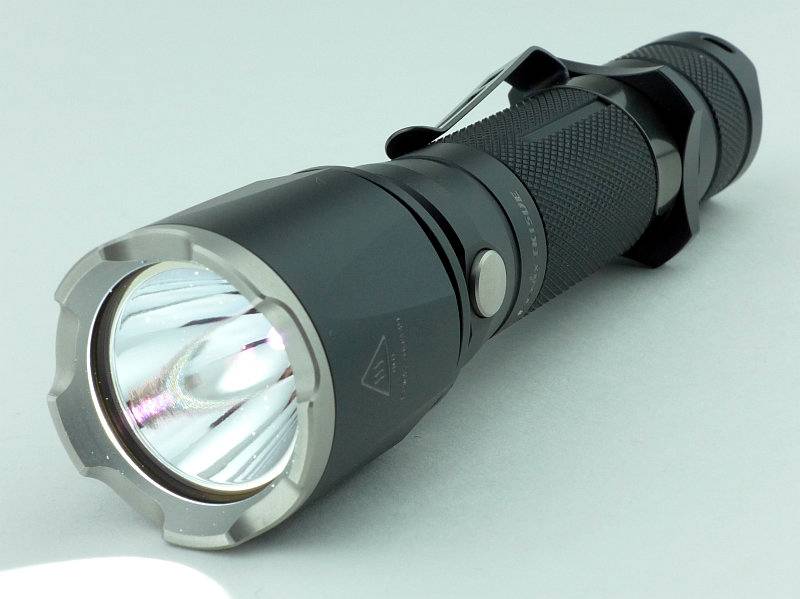
Discussing the Review:
Please feel free to add comments to the review, but the ideal place to freely discuss these reviews is on a forum. If you started reading the shorter forum version of the review, but followed the link this full exclusive review, please return to that forum to discuss the review there.
If you read the review entirely on Tactical Reviews, please consider one of the following to join in any discussion.
CandlePowerForums – Flashlight Reviews Section (Largest and Friendliest Flashlight Community Forum)
EdgeMatters – Sponsored Reviews (UK based Forum for Knife Makers and Collectors)

